More than 40,000 people came to check out
Farm World last month
Patrons flocked to Lardner Park to see all that the agricultural sector had to offer



STORY - PAGE 5

Photograph Supplied




More than 40,000 people came to check out
Farm World last month
Patrons flocked to Lardner Park to see all that the agricultural sector had to offer



STORY - PAGE 5

Photograph Supplied



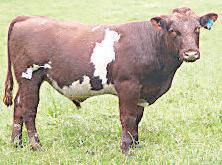



THE Victorian Farmers Federation (VFF) will create anew VFF Energy and Transmission Taskforce, which includesGippsland’s Hamilton Gerrand, to lead its advocacy on renewable energy and transmission infrastructure development across Victoria and help give farmers asay
The new taskforce,which includes Mr Gerrand, who is VFF Gippsland’s branch president, was established by the VFF Policy Council and will focus on providing aunitedadvocacy approach for farming communities that are battling proposed developments.
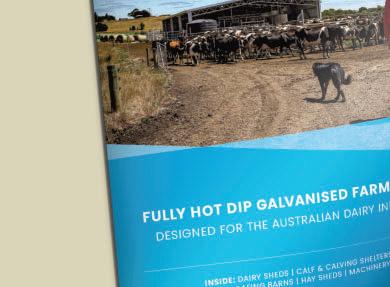
The VFF president,Mirboo North’sEmma Germano, said it was important that farmers who aredirectly affectedby these developmentslead the VFF’s



advocacy efforts on the issues affecting their communities.
“Ironically, thistaskforce is about giving power to the people to have their say,” she said.



“Farmersneed to be the ones at the centreofthis. It’stheir livelihoods at risk and it’stheir communities that arebeing torn apart.
“It’s vital that the VFF’s advocacy is directly connected to the communitiesthatare set to be impacted. It’salso important that these communities areconnected to one another.”
ApartfromMrGerrand, the taskforce will be led by the VFF’sPlanning,Environment and Climate Change Committee chair,Gerald Leach, who will work alongside VFF Horticulture vice-president, Katherine Myers;


and VFF water councillor,Kain Richardson, withfurthermembers to be appointed over the coming weeks.
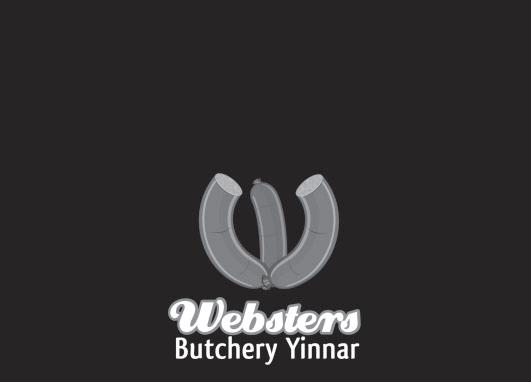
“The work done by farmer advocates to date has been incredible.
I’m pleasedthat we will have peoplelikeGerald, Katherine, Kain and Hamilton sharing their local experience withfarmers from other parts of the state, who are just starting to learnabout the significant impact these developments pose for their own farm businesses,” Ms Germano said.
Ms Germano said the taskforce’s focus would be on critical issues involving land access and compensation for farmers, whilst also looking at alternatives to overhead powerlines over farms.
“The VictorianGovernment’s announcement of $8000













additional per kilometreofeasement was truly aslap in the face for farmers, when we haven’t even had the discussionabout what fair compensation looks like,” she said.
“Weneed to solve that issue, whilstalso lookingtoalternatives to build transmission towers over farms. Using existing easements and undergrounding powerlines must be explored.”

The NationalsMemberfor Gippsland South, Danny O’Brien, wants to know why transmission lines for the GippslandRenewable Energy Zone (REZ) arenot being placed underground.
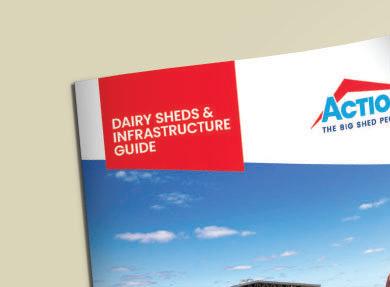

Speaking in Parliament, Mr O’Brien called onthe Minister for Energy and Resources, Lily D’Ambrosio to explain why underground transmission lines arenot


being considered, not just for the Gippsland REZ but around the state.
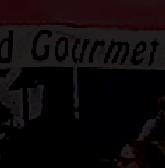

“I am very awareofthe additional costs and technical difficultiesthat will likely apply to underground versus overhead transmission lines,” he said.

“Butthe government has recently gone through around of consultation in which the vast majority of constituents -people faced with prospective overhead transmission lines on their properties –asked the question about undergrounding.
“The Minister needs to come out and explain and give information about the potential costs and benefitsofoverheadversus underground.”
Continued Page 6
LATROBEValley residentshave lost their fight to stop the proposed 200 megawatt Delburnwind farminthe Strzelecki Rangesafter the Supreme Court found thatthe Victorian Planning Minister’s permit for the wind farmwas valid.
Acommunity group,Strezlecki CommunityAlliance,had challenged the approval of the Delburn wind farm, allegingpermitsbreachedalocal planning requirement not to build wind farm infrastructurewithin five kilometres of the urban areas of Moe, Morwell and Traralgon.




Supreme Court JusticeMelinda Richards found no part of the wind farm was within 5km of the three towns.
“The permits granted by the Minister on 27 March 2022 arenot contrarytothe five kilometre prohibition in clause 52.32 of the Latrobe Planning Scheme ” Justice Richards wrote in her decision “The proceeding must therefore be dismissed ”
Peter Marriott, executive director development of the renewable energy developer, OSMI Australia, said he was pleased with the Supreme Court outcome


“This provides certainty for the Delburn wind farm to proceed, and we are actively working to bring the project into construction in early 2024,” Mr Marriott said

We are excited to be able to invest in the region and create local jobs We are now focused on getting on with building the wind farm and contributing to a much
needed transition to renewable energy for Latrobe Valley and Gippsland.
“The DelburnWind Farmwill produce renewable energy,reduce carbon emissions, and create local employment.”


Overlooking the site of the dismantled HazelwoodPower Station, theDelburn windfarmproject on plantation land in the Delburnareacovering the HVP Plantations’Thorpdale tree farm. The site is generally bounded by Coalville to the north, Thorpdale to the west, Darlimurla to the south, and Boolarra and Yinnar to the east.
OSMI Australia says the DelburnWind Farmwill provide morethan 186 full time jobs duringconstruction and 24 ongoing jobs during its 30-year operational life. With acommitment to hiring locals,the wind farmwill deliver economic benefits for local suppliers, contractors, businesses and accommodation providers, the company says Lawyers for the community group had argued over the proximity of the proposed site to the Latrobe Valleys main towns But also that nearby towns of Newborough, Boolarra, Yinnar, Thorpdale, Delburn and Mirboo North were part of a greater Latrobe City and should be included in the buffer zone Strezlecki Community Alliance s counsel, Paul Connor, told the court last week that this was not a case where wind energy facilities were on trial, “They’re
important assets for our state in terms of providing renewable energy, but they do have significant offsite impact,” he said.
Residents also expressed safety concerns the 33 turbinescould prevent aerial support in the bushfireprone area.
Mr Connor said the community group was open to relocating some of the turbines further from thethree towns,which he definedas aregionalcityunder the relevant legislation.
While the planning scheme recognised Moe-Newborough as asingle urban settlement, therewas no mention of Newborough or the other towns in the planning scheme clause regarding wind farmproximityrequirements,Justice Richards’ decision read.


Friendsof the Earth welcomedthe Supreme Court’s decision, saying building a wind farm in a plantation site is an effective way to protect the natural environment as the plantation is already a highly modified industrial site
“Our energy system is changing, the Latrobe Valley has a proud history of energy production and it is great to see that the Valley will continue to play a part in Victoria’s energy production” said Wendy Farmer, Latrobe Valley resident and community organiser for Friends of the Earth Melbourne
Trevor Hore, from the local resident s group Strzelecki Sustainable Futures, said his group had campaigned for many
years in support of the wind farm.
“Wewelcome thecourt’s decisionto validate the planningpermit and are looking forwardtoseeing the wind farm constructed,” he said.
Speaking after the courtdecision, Mr Marriottsaidthe Delburn wind farm would work with the community to ensure it delivers long termbenefits to the surrounding communities.
“Weinvite community members to join our Community Consultative Committee to help shape the generous neighbourhood profit-sharing scheme and community development fund,” Mr Marriott said.
“Wewant the local community to determine how the neighbourhood profit share scheme should be shared. This includes deliveringabout $500,000 per annum directly to the neighbourhood area near the wind farm, on top of the committed $150,000 community fund per annum
“We also want to hear from any residents who are concerned or opposed to the wind farm development - it’s not too late to discuss your concerns, ask questions and let us work with you to share information and understanding ”
The company says information updates are an important part of the Delburn wind farm community engagement program and will increase in frequency as the wind farm project develops.

For further information go to delburnwindfarm com au
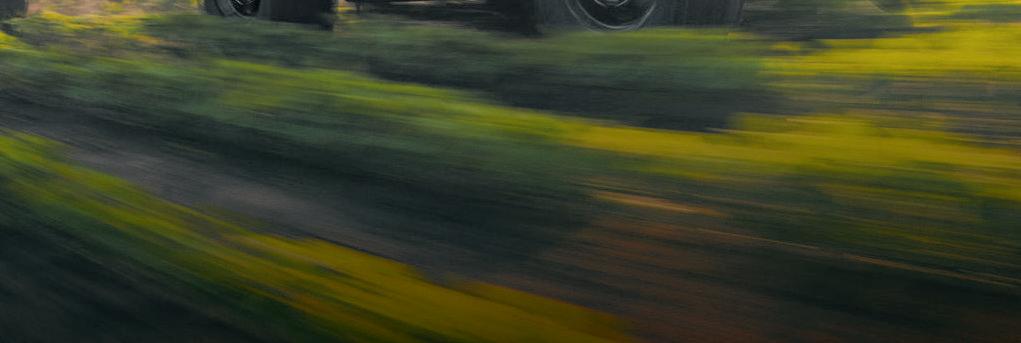

















THE federal Member for Gippsland, Darren Chester,saysgovernments are failing to deal with the real environmental issues facing regional Australia.
Speaking in Federal Parliament last week, Mr Chestercalledfor abroader environmental debate which wasn’t focused solely on reducing emissions.
“Weneed abalanced approach to ensuring we achieveour energy security and affordabilityneeds and deliveringthe environmental outcomes that Australians expect,” Mr Chester told Parliament.
“I accept that climate change is aglobal challenge and we must play our part as a responsible nation, but the other environmental challenges, the real environmental challenges we face everyday demand local action.
“What Iamtalking aboutispractical environmental actioninthisnation. The need for moreboots and fewer suits –that’s moreboots on the ground doing practical environmental work and fewer suits in

the cities making excuses for why things can’t be done.”


Mr Chester said practical action included afocus on pest animals and weed control, the need to improve biodiversity and tackle erosion and riparian vegetation.“Things like hazardreduction in our forests and critical asset protection around our towns and catchments and important infrastructure,” Mr Chester said.
“What I’m seeing as Itravel throughout Gippslandis farmers,landholdersand people livingintownswho aredeeply concerned aboutthe impactofferal animals –feraldeer,feralpigs –intheir communities.

“These issues demand greater attention in this place in partnership with the land owners and the state governments.”



Mr Chester said issues such as footand-mouth disease posed risks to the agriculturesector if it weretoget loose in Australia.
“Feralpigswould spread this disease








 By ZAIDAGLIBANOVIC
By ZAIDAGLIBANOVIC
TEARS of joy and cheersflooded afull gallery last month as Latrobe City Council approved apermit for the development of Kevin Perry’s property.
The approved planning permit -which upendeda recommendedrefusal by the council officers-will allow Mr Perrytolive on the property and carry on the family farming tradition.
Mr Perry recallsgrowing up in Yinnar on his grandfather’s dairy farm. “As soon as Icould stand Iwas out on the bucket, helping milk the cows,” he said.
With plans to follow in his father’s footsteps, Mr Perry and his father Kevin Perry Senior bought the 21.5 hectareproperty inYinnar South 11 years ago.
The property has nine paddocks, two sheds, astock water network, new stockyards and 20 Angus mothers for breeding.


Mr Perry argued to council that ahouse on the property is an essential for effective farmmanagement.Experiencing high calving losses on the farmin2022 resulted in about a$25,000 loss for the Perry’s.

For farmers, adwellingonfarmland was morethan just ahome, he said; it serves as afarmoffice, administrative centre, meeting room, first aid shed, animal pharmacy, security andbiosecuritycheckpoint,tea room,toiletblock,and monitoring post around the clock, 365 days ayear.Stock can be monitored for healthand welfare and regularlyrotatedthrough the paddocks to ensuremaximum feed utilisation.
The permit approval means that Mr Perry, his partnerSarahand son Charlie can move out of their parents’ home and raise their own family on the property.
The family will also be able to manage their time moreeffectively and be more productive, being closer to the stock.

First buying the property 11 years ago, the Perry’sapproached councilinformally afew years ago with no luck, but with the help of afarming consultant, the Perry’s managed to get the plan in motion.


“It’s an interesting scenario, not many people get this through. This case was ateam effort and quitethe emotional journey,” Mr Perry said.
Mr Perry suggested thiscouncil decision “can set precedence forthe area”. “Our land is landlocked by other farms. There’s no room to expand,” he said.

As the propertyisunder 100 hectares, it became subject to aplanning permit.

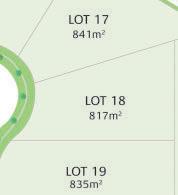









The councilissued areport into theplanning permit that refused on the grounds that the justification was notadequateand the land did not need adwelling.
The council report found also that the case was inconsistent with the purpose of the farming zone and local policy.
The property in abushfirerisk area was also at odds under conditions proposed by Planning Scheme Amendment C127.



Dean Suckling, director at Enprove Ag &Environmentand Mr Perry’sfarming consultant, was relieved that the “right outcome was made”.



“I’vebeen doing this along time, I’ve worked with thousands of farms, big and small and they are all worthy. I commend Mr Perryfor improving our industry. He is exactly the type of person who gives our industry a future and he is correct; their farming will be better when he lives there and the community will also be better for it,” hesaid.
through the country and we now have feral pics showing up in northern Victoria in my electorate of Gippsland,” he said.
“It also has to includeaseriousconversation about aworld-class and sustainable native timber industry in regions like Victoria, wherethe industry is under direct threat right now by Premier Dan Andrews.
“I would argue the true environmentalists in this nation livein regional communities. They’rethe people who areout their getting their hands dirtyjoining Landcare, Coastcare, doing feral animal control and planting trees.
“Unfortunately in Victoria the workforce for public land management has been gutted by agovernment which continues to invest in moresuits and fewer boots.”


FARMERS in the Macalister Irriga District (MID) arebeing urged to look for signs of salinity on their land after thr years of consistently high rainfall.
AgricultureVictoria South-EastIrrigation Regional Manager,Sarah Killury, said high rainfall over the past three years, including floodand storm activity,had caused groundwatertable to rise to its highe recorded level since records startedin199
“The 2021 calendar year was our wettest year in the MID since 1978 based on East Sale Bureau of Meteorology data, with 2020 and 2022 also recording higher than aver age rainfall,” she said.
“These highrainfall years have resulted areas of waterlogged soils across the region. Removing excess water from paddocks critical to managingthe ongoing sali risk.”
Ms Killurysaid SouthernRural Wa salinity interception bores werecurrently operating continuously to managegroundwater levels as much as possible in target areas across the catchment.

“When the soil profile dries out groundwater levelsfall,salt may be behind and if left unmanaged, it can impact futureproduction capacity within low-lying areas,” she said.

“We’reencouraging farmers to be on the lookout for the tell-tale signs of salinity as the soil dries out.


“Signs include achange in pasturespecies along check banks, indications of poor pastureorcropgrowth and tip burning of leaves, and the formation of awhite crust over bareground,” she said.


Ms Killurysaidsalinity management strategies include leaching or flushing salts from the root zone of plants, using drainage options for flood irrigation to ensure water flows onand offpaddocks as quicklyas
“In the long-term, the increased salinity risk highlights the importanceofprograms that improve water-use efficiency of onfarmirrigation,both now and into the future,” she said.
“Irrigation efficiency reduces recharge to shallow groundwater systems,reducing the risk of soil and groundwater salinisation.”
Furtherinformationon salinitymanagementor flood and stormrecovery is available on the Agriculture Victoria website.


For free salinity advice and water salinity testing, contact the AgricultureVictoria Irrigation Team in Maffra on 0428 387 869.



 Yvette BRAND
Yvette BRAND

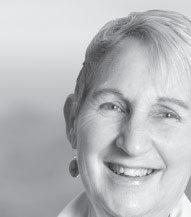

STRONG sales and recordcrowds were the ingredients for successat this year’s FarmWorld, with morethan 40,000 people passing through the Lardner Park gates.

Returning to athree-day format from Friday, Lardner Park chief executive officer, Craig Debnam,said the event’ssuccess reinforced its reputation as an agricultural field day.

With 480 exhibitors representing more than 700 brands, Mr Debnam said the site was virtually sold out.
“We’ve workedhardwith exhibitorsto bring their brands to the market. We are trying to reinforce the value of the local dealer and the brands they offer,” he said.
“The focus is on presenting an agricultural field days, it’s not just brand promotion.”
Positivefeedback from exhibitors indicated strong sales.
Mr Debnam said car dealerships and agricultural machinery dealers were reportingstrong sales on social media throughout the event, saying it was rewarding to see “another sale” regularly posted by exhibitors.



He said exhibitors also had reported signed orders and leads to follow-up.
“It’s about the sales opportunities that present over the next three to six months for follow up deals,” he said.




“When the economyisindoubt with interest rates, to have asalespipeline is so important.”
Mr Debnam said the site layout of themed zones of agricultural equipment,farmsupplies, livestock, tools and general interest areas was proving popular with exhibitors and patrons.
The three-day program was introduced in 2021 to meet COVID restrictions but returned to the traditional four-day program last year

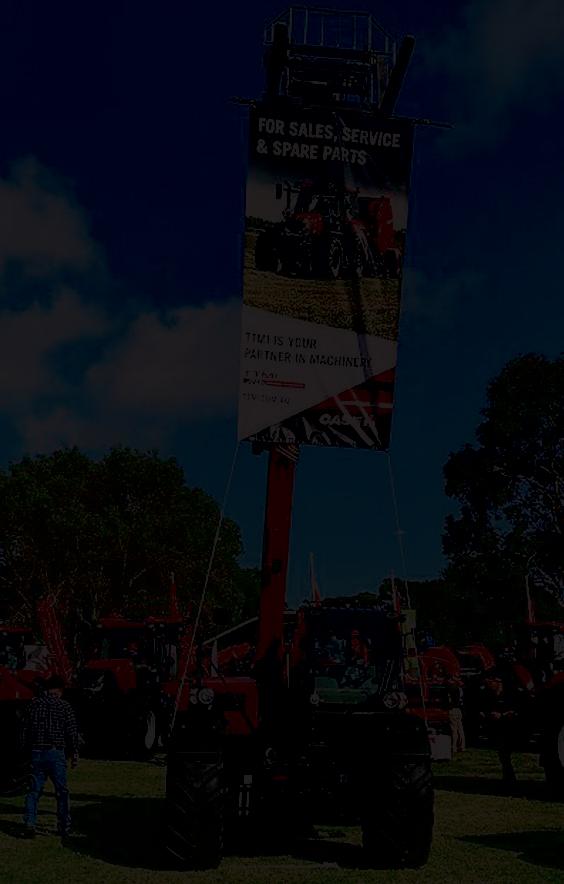
Mr Debnam saidasurvey of exhibitors after last year’s eventindicatedstrong support for the three-day format.
He said 74 per cent of survey responses requested athree-day event so “wehave listened to our customers”.
“Four days at atrade show is alot. There werestill peoplethat would prefer four days but the three days worked for most people and the crowd numbers supported that,” he said.
Saturday was the strongest day, setting anew dailycrowd recordof16,000 people.
Mr Debnam said alot ofpeopletook advantage of the combinedFarmWorld and rodeoticket to make it an all-in-one Saturday afternoon into evening experience.

He said introducing anight-time rodeo to the program aimed to bring farming families and rural peopleto FarmWorld during the day and offer afamily-friendly event at night.
“Sunday used to be the stand-out day but
that has shifted to the Saturday,” he said.
Mr Debnam said an AgricultureVictoria grantsupporting free entry for children had been well received and created areally family-friendly vibe.
He said 40 bus loads of students attended FarmWorld on Friday, which was “really importantbecause they areour future farmers”.
Warragul and Drouin Gazette
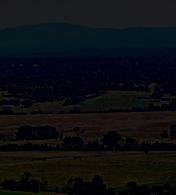






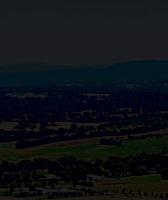



From Page 1
THE state government saysthe new$8000 payments will apply to Integrated System Plan (ISP) and Victorian Renewable Energy Zone(REZ)transmission projects and areinadditiontoany paymentsunder existing arrangements for transmission easements under the Land Acquisition and Compensation Act 1986. The new payments, which will first go to
landholdersinwesternVictoria,will also apply to the Victoria-Tasmania interconnector (Marinus Link) project and transmission links being developed by VicGrid to connect VictorianRenewableEnergy Zones and futureoffshorewind projects.
In Gippsland’s REZ, anew 500kV transmission line and terminal station areplanned to connect generators at the coast back to the existing network in the
LAST century, in the early days of electricity, towns ran their own energy systems locally.
Now aVictorian town has captured its data-driven, 21st centuryjourney to find local energy solutions in ashort filmtoshare its experience withother communities aroundAustralia and internationally.
The historictimber communityof Heyfield, is the star of the show.

Thanks to the three-year,$1.9 million MyTown Microgridfeasibilitystudy hosted by Heyfield, which is coming to an end on June 30 this year,the community has hadaccess to outside expertise and cutting-edge technologies for adeep-dive investigation into its energy future.
As aproject output,this journey of local energy discovery will now be shared via MyTownEnergy.net -anonline ‘Decision Support Tool’, designed for use by other communitiestohelpthem streamline and fast-track their own local energy projects.
The 10-minute short filmhas been

released, and will provide other communities with awindow into the Heyfield journey and the people behind it.




The mainfilm is supported by apackage of video interviews from participants in the MyTown Project and has been funded by University of Technology Sydney’s Institute for Sustainable Futures (UTS ISF).
UTS ISF,a leading sustainability research institution in Australia, has co-ledthe MyTown Project,along with the Heyfield Community Resource Centre (HCRC) and industry partner, Wattwatchers Digital Energy.
Funding for the MyTown Project has been provided by the federal government’sRegionaland Remote Communities ReliabilityFund (RRCRF), which awarded a$1.75 milliongrant in 2020;and the stategovernment’s Latrobe Valley Authority (LVA), which contributed $100,000.

View the short film on YouTube: youtu. be/idfa7ur3GcE
Latrobe Valley, either at Hazelwood or Loy Yang. They will connect up to 5000MW of new offshorewind generation in Gippsland. The link is expected to provide up to 2100 megawatts of network capacity for future renewable energy generation projects. Marinus Link is aproposed 1500 MW
underseaand undergroundelectricity connection to further link Tasmania and Victoria. It willprovide accessto 1500 MW of capacity from Tasmania, including pumped hydrostorage to provide base-load electricity when needed.

RESPONSIBLE Wood stands for the principle that ‘wood is good’. It is the ultimate renewable.
As such, we areconcerned that future options for sustainablewood production arebeing carelessly closed off.
This concernarises as certified, sustainable forest management is being wrongfully confused by key decision makers and influencersasbeing incompatiblewith the mitigation of climate change, the maintenanceof biodiversity and native forest health.
The implication thatsustainableforest management is possible in plantation forests,but not in native forests, is not borne out by scientific evidence.
It is also inconsistent with the approaches usedin otherregions,suchasEurope, where thesustainablemanagementof native forests has been practiced for many centuries.
Timber harvesting and the associated forest regeneration activities, when practiced in accordance withforest certification systems, do not reduce carbon stocks or biodiversity across the certified forest estate. Neither does it lead to deforestation
To be clear, deforestation and the associated environmental harmisreadily understood to be the clearing of forests for conversiontootheruses suchasurban development,agriculture andmining.
Certified, sustainable forest management is the exact opposite and prohibits deforestation.
Put simply, applying scientifically-based sustainableforest managementprovides healthy forests and,inmanycases, improves forest health through the application of best forest management.
Importantly, the managers of certified
forests arerequired to maintain or enhance the forest’scontribution to carbon cycles and to identify significant biodiversity values and then to implement practices to support the maintenance or enhancement of these values.
The standarddevelopment process is incredibly robust, as it should be and as the community should expect. The ongoing health of our forests andeverything that lives within them, is our number one priority objective, including the protection of old growth forests.
By way of further context, the Responsible Wood certification system undergoes rigorousindependent assessment againstthe global Programme for the Endorsement of Forest Certification (PEFC) demanding sustainabilitybenchmarks, to ensureconsistency with internationalrequirements which are recognised and valuedacross the planet.
(PEFC certifies morethan 325 million hectares or proven, sustainably managed forests globally and is the world’s largest forest certification system).
HereinAustralia, we arefurther audited by the Australian Standards Development and Accreditation CommitteeofStandards



Australia. In otherwords, Responsible Wood is the official Australian Standardfor Forest Certification and Chain of Custody.
If that isn’t enough, the forest managers themselves arerightly, auditedagainst our standardbyindependentauditors accredited by JAS-ANZ, ajoint independent accreditation auditorgroup.Third-party accreditation -the type that JAS-ANZ provides -isrecognised around the world as the highest and most credible type of certification an inspection body can obtain.
Timber and otherforest productsare globally recognised as asustainable alternative to plastics, concrete, steel, etc.
If such products aren’t supplied in atrusted way by Australia, for Australia, then where is it coming from? By closing offsustainablenative forestry inAustralia, arewe exacerbating aglobal environmental crisis?
Failuretomaintain sustainable options for the management of our native forests will:
Diminish Australia’s capacity to meet the challenges posed by climate chance to our forest estate, and in providing low carbon materials to society;
Lead to hardwood timber for
Australia being imported from other countries, many of which do not have equivalent forest management standards, or worse have ineffective forest law enforcement;

Exacerbate bushfire management issues/costs and associated increased risk to human life, wildlife and communities;
Deplete sustainable forest management skills, expertise and systems at the very time when the need is increasingly urgent;
Increase economic disadvantage in many rural communities.
ResponsibleWood is thetrust markto ensurecertified forests areregenerating as healthy, if not healthier because of sciencebased, generationally proven, sustainable forest management practices.
Forests requiresustainable management and ResponsibleWoodcertification is Australia’s recognised response to protecting our most precious forest resources while actively contributing to the needs ofour society.
Responsible Wood is Australia’s leading certification systemfor sustainable forest management. It is based on AS4708, Australia’snational standard for sustainable forest management developed under accreditationby StandardsAustralia.Responsible Wood standards are endorsed by PEFC, the leading global forest certification scheme recognised in more than 50 countries.
All Australia’spublicnative wood production forests in Victoria,NSW, Queensland, Tasmaniaand Western Australia are independently certified as complying with the Responsible Wood forest management standard.
•Abilityfor Pick up andDropoff for certainareas forservicing







COLLABORATION between Gippsland farmers and farmer groups resultedin aworld-renownedsoilspecialist visiting Newry, Bairnsdale and Orbost last month.

Independent plant and soil health scientist, Joel Williams,anAustralian currently basedinCanada, engagedwith morethan 100farmers across the region.
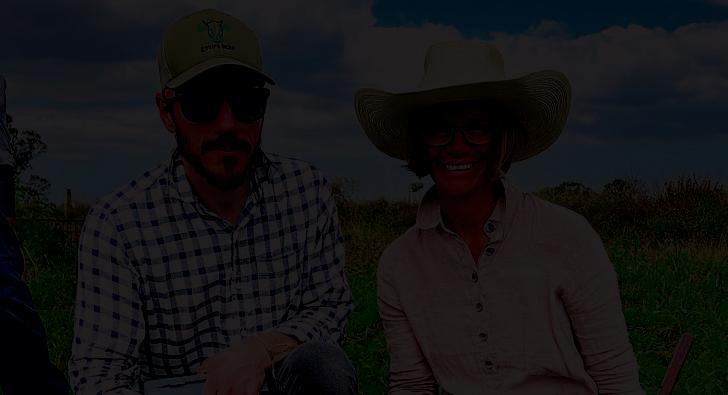
For dairy farmers Kate Miramsand Pete Neaves, the visit hosted on theirfarmat Newry was afantastic wayto help them continuetheir transition fromchemical fertilisers to morenatural ways of fertiliser application.

The duo milk 300 cows and two weeks beforeMr Williams’ visit, at his request, theyuseda foliar spray on amultispeciesperennial pasturethat included red clover, chicory, ryegrass, cocksfootand white clover,sothat therewas something to look at on the day.
“Wejumpedat the chance to offerour property to showcase his work,” Ms Mirams said.
“He sent us afoliar ‘recipe’ that we applied along with urea on one paddock, then the second paddock we applied just straight urea, and the thirdhad nothing applied.
“At the field day it was obvious to see the





differencebetween the applications –the foliar/urea paddock had morefeed available, less plants had gone to seed and it also looked less moisturestressed.”
The foliar recipe included -tothe hectare -one kilogram of fish hydrolysate, amultitraceelement package, 30 kilograms of urea, 2kilograms molasses and 300 grams of fulvicacid ,mixedwith 150 litres of water
“With foliarapplications you can feed the plant exactly what it needs,” Ms Mirams said.


“That way you can boost the plant’s photosynthetic activity, which in turnincreases the root sugars, along with the activity and biodiversity of microbes in the soil.”
Proving thevalueofthe speaker, more than60 beef, sheep and dairy farmers turned out to takenoteofMr Williams’ teachings at Newry.

Ms Mirams said Mr Williams method was a“breakthrough in our understanding”.
“Wehave beentryingtoimprove our organic carbon levels. If we can increase the carbon then the soil can holdmore water,sowepotentially could irrigate less but also captureand store morefrom thunderstorms,” she said.

“It was really eye-opening to see how much
of an impact you can have on increasing photosynthesis by using foliars.
“It’s an excellent toolfor farmers and offers amassive bang for buck compared to granular.”


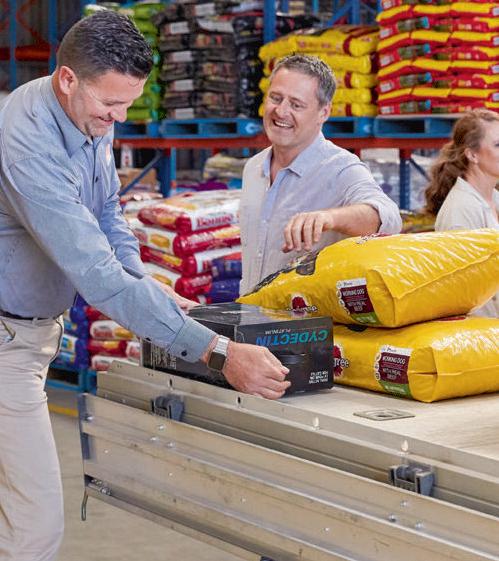
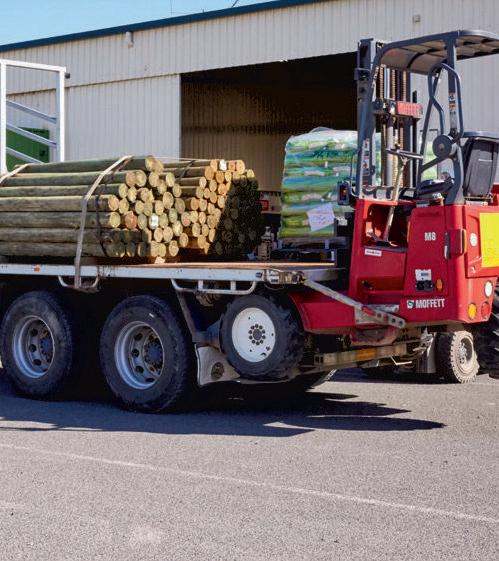
Kate saidworkingwithall thedifferent groups thatmadethe fieldday happen was fantastic, and agood collaboration for agricultureinGippsland.

Gippsland Agricultural Group (GAgG) generalmanager,Jen Smith,saidthe partnership approach between Wellington Shire, SouthernFarming Systems, Landcareand TopSoils in hosting events in three locations,meant multiplefarmers withvarying degreesofknowledge from across Gippsland had the chance to attend.
“Wefacilitated learning for all levels,” Ms Smith said.
“That was so everyonecould get the most outofthe speaker, we held abeginner level workshop at Orbost, an intermediate level field day at Newry andamasterclass in Bairnsdale.

“That way,depending onwhere your skillsetwas at,you could choosewhich best suited your needs.”
The masterclass was capped at 20 people who brought soil test results from their best
and worst paddocks.
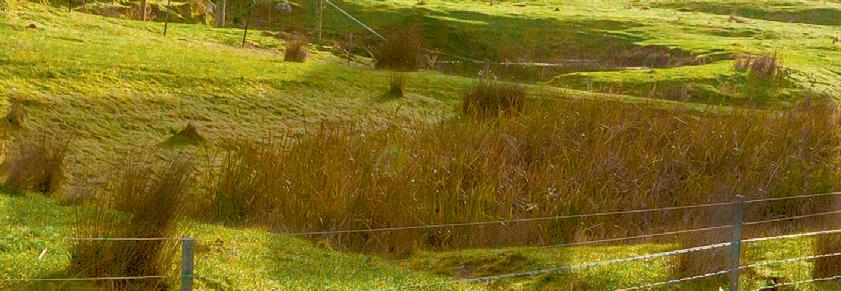

In the near future, they will also have a one-on-one Zoom consultation with Mr Williams as part of that process.
SouthernFarming Systems and TopSoil coordinator,Natalie Jenkins, said although the three-phase model hadn’t been tried before, it was definitely successful.
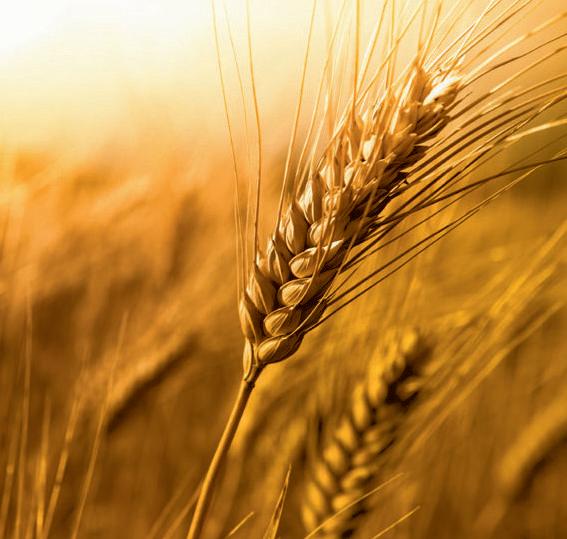
“The aim was to assist as many farmers as possible,” Ms Jenkins said.
“Joel created lots of discussion and his wealth of knowledge is incredible.”
Mr Williams recommends liquid foliar nitrogen sprays over soil-based applications becausethey prevent nutrient lockup in the soil,eliminate leaching,significantly reduce volatilisation, target the leaf so nitrogen rates can be cut, bypass soil imbalances, and can absorb nutrients when root uptake is poor


Adding acarbon source such as humic or fulvic acid can benefit spray mixes because carbon binds to nitrogen to form a larger morestable molecule complex, which improves uptake andislesslikely to be lost to the environment.
Foliar fertilisers arealso absorbed better in slightly acidic conditions.

THE state government is offering grants to localcommunity groups toimprove habitats, protect native wildlife and help preserve internationally significant wetlands in the Gippsland Lakes.
The Minister for Water,Harriet Shing, has opened anew round of the Gippsland Lakes Coordinating CommitteeCommunity Grants, with morethan $137,000 to share across successful projects.
These grants provide fundingtohelp community groupscomplete environmental projects through on-ground management activities and community engagement.
Eligible projects include restoring habitat for native species, reducing sediment and nutrient loads, protecting native animals and improving understanding of plants and animals that call the Gippsland Lakes home.
The last round of grants invested $4 million across the lakes includingprojects suchasimprovingthe condition and connectivity of Lake Wellington and surroundingwetlands, installing ‘seagrass friendly’ boat moorings and improving beachnesting sites for birds though the re-nourishment of sand islands.
Ms Shing said communitywas at the heart of theprogram to protectand enhance the Gippsland Lakes. “This new round of
grants will help our fabulous volunteers and community groups to get on with more projectsand deliver moreenvironmental and wildlife benefits,” she said.
The Member for EasternVictoria, Tom McIntosh, said thegrants had already helped protect the Lakes’ Burrunan dolphins and helped restoremultiple wetlands withthe helpofcommunity and school groups.


The chair of the Gippsland Lakes coordinating committee, Glenys Watts, said past funding rounds had left asignificant legacy. “Weencourage new and existing communitygroupstoapply andplaytheirpart in the bigger pictureweare all committed to –protecting the important natural and cultural values of the Gippsland Lakes,” she said.
The grantsare partof a$248 million investment to improve the healthof waterways and catchments across Victoria. To date, $7.5 million has been invested towards improving the health of Gippsland Lakes over three yearsthrough support to the Gippsland Lakes coordinating committee.
Applications areopen until Monday, May 1. For moreinformation or to apply visit loveourlakes.net.au
THE state government’s fox and wild dog bounty has resumed for 2023. Agriculture
Victoria biosecurity officers will again operate monthly collection centres across the state from March until October AgricultureVictoria biosecurity manager, Jason Wishart,said participants could submit entirefox scalps for a$10 reward and/orentirewilddog bodyparts fora $120 rewardatspecified collectioncentres during scheduled collection times.
“I urge participantstorefresh their knowledge of the bounty terms and conditions to ensuretheir bounty submissions are accepted,” Mr Wishart said.
The Fox and Wild Dog Bounty program received $6.7 million in the state government’s 2020-21 Budget and will continue until 2024.
Since the program was introducedin 2011, morethan amillion fox scalps and close to 4630 wilddog body partshave been collected in Victoria.
“In 2022 alone, some 82,558 fox scalps and384 wild dog bodyparts werecollected,” Mr Wishart said.


“Foxesand wild dogs requireongoing management by all land managers and Agriculture Victoria encouragesan integrated approach using arange of management practices.
“Thebounty offers incentive forcommunity participation in fox and wild dog management,but othertechniquesalso

areimportant to effectivelymanage the damage they cause.”
Foxes and wild dogs prey on livestock, especiallylambs and sheep, inflicting significant economic and production loss to Victoria’s livestock sector.They also have an impact on native wildlife.
Participants arereminded that the VictorianFox and Wild Dog Bounty has gone digital. “AgricultureVictoria introduced the new system last year to streamlinethe application process, reduce wait times at collection centres and allow participants to keep track of bounty applications,” Mr Wishart said.

Participants need to register for the new digital payment system and should refresh their knowledge of the terms and conditions to ensuretheirsubmissions areacceptable.
First collections in South East Victoria weremade in late March, with morecollections scheduled for May, July, September and October
Department of Agriculturecollection points in Gippsland areatEllinbank (1301 Hazeldean Rd), Bairnsdale (Dargo Rd), Maffra (1 StratfordRd), Yarram (Rodgers St) and Woori Yallock (Depot, Symes Rd)

To find out more or register for the new digital system, please visit agriculture.vic. gov.au/bounty and follow the prompts. Alternatively, call the Customer Service Centreon136 186 for moreinformation.



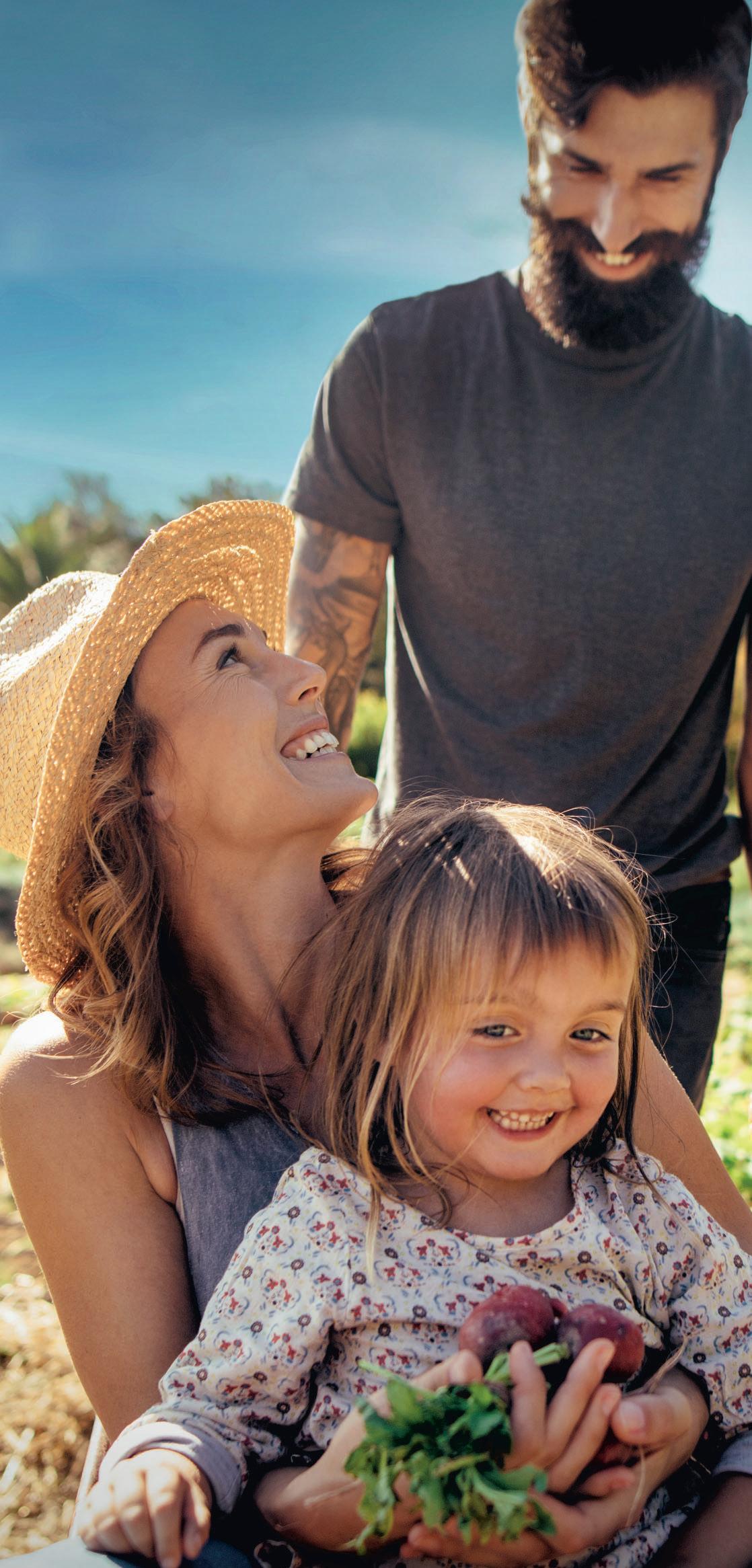

SIX yearssince the inceptionofthe Australian Beef SustainabilityFramework (ABSF) to track key indicators of sustainability across the beef industry, asurvey has been launched to informthe ABSF’s next evolution.
ABSFSustainability Steering Group (SSG)chair,Mark Davie, said setting sustainability goals is anatural progression for the ABSF and the industry to reaffirm its commitmenttocontinual improvement.








“Setting goals will make the industry even moretransparent and will help better meet the expectations of our customersand the community,” Mr Davie said.
“Most importantly, it will help guide where to invest our efforts, and solve global sustainability priorities through an industry lens on productivity and profitability within the supply chain.

“It is crucial we hear from as many people as possible across the Australian beef value chain as these survey findings will be pivotal in helping decide our targets.


“This is an industry-led framework, andit is thanks to the many years of consultation and collaboration that therehas been so much progress.

“It is vital we areconstantly looking forwardtocontinue to grow our performance acrosskey measuresof sustainability, expand market access and support aprosperous industry and nourished, thriving communities.”
TheABSF currently tracks 53 indicators across 24 priority issues that aregrouped under the themes: best animal care; environment and stewardship; economic resilience; and people and the community. This surveywill focus on the importance of drafted goals and targets to the individual in the supply chain, as well as its importance to the industry. The survey can be found on the Australian Beef Sustainability Framework website and closes on April 5.
VICFORESTS is calling on interested landholders to take part in the 2023-24 Gippsland FarmForestry Grant Program. The program’s aimsare to support plantation growth on farms to expand and diversify Victoria’stimber resources, while generating other benefits. These include enhancing farmproductivity; diversifying income streams for landholders through the sale of timber and potentially carbon credits (or contribute to carbon offsets via otherindustry schemes); and generating economic activity in Gippsland.
The first year of the Program (202223) has focussed on the establishment of demonstration sites, with grants awarded to selected participants who arenow in the process of establishing their plantations.
Further grants are now available for plantation establishment in 2023-24. The grants contribute about 50 per cent of the typicalestablishment and early management costs.
The program focuses on short and long rotation plantings for both hardwood and softwood species, with three main planting methods:
Woodlots of small scale plantations, generally between 5-20 hectares;

Shleterblets -strips of trees
strategically placed to shelter livestock, crops and pastures from the elements, as well as timber production;





Wide-spaced plantings -trees planted several metres apart to enable effective grazing of livestock or growth of crops, as well as timber production.
VicForests emphasises that farm forestry is different from large-scale commercial plantations as it incorporates growing of treesintootherfarming systems.
“It works best when it forms part of a whole farmplan,including for woodlots, timberbelts and wider-spacedalley plantings,”says the state’s timber seller
The benefits offarmforestry include diversifying farmincome; providing shelterfor stock, crops and pastures; environmental benefits such as carbon storage, habitat creation and improved water quality; and creating jobs in the community
Grant applicationsopened on March 13 and close on April 14, 2023. Successful applicants will be advised in May, 2023. For downloadable program guidelines and application forms: https://www. vicforests.com.au/vicforest-forestmanagement/farm-forestry

WINTER poaand barley grass weed control is an essentialcomponentof pasture management, especiallyinnew permanent ryegrass pastures
Winter grasses can compete with desirable grasses for nutrients, water,and light, reducingpastureproductivity andquality
Winter grasses,such as PoaAnnua, can be particularly challengingtocontrol in new ryegrass pastures.
Thesegrassesare highly competitive and canrapidly invade new or disturbed areas,suchasnewlyseeded pastures
By spring they become reproductive and can alsoproducelarge amounts of seeds, which can remain viable in the soil for severalyears.
Winter grasses can reducepasture productivity and quality,and in latespring pastureswhenwintergrasses perish, paddocks areleftvisibly open and subject to further weed invasion.
“Tocombat winter grasses in new ryegrasspastures, amulti-pronged approach is recommended,” advises Adam FisherofNotman PastureSeedsin Poowong.
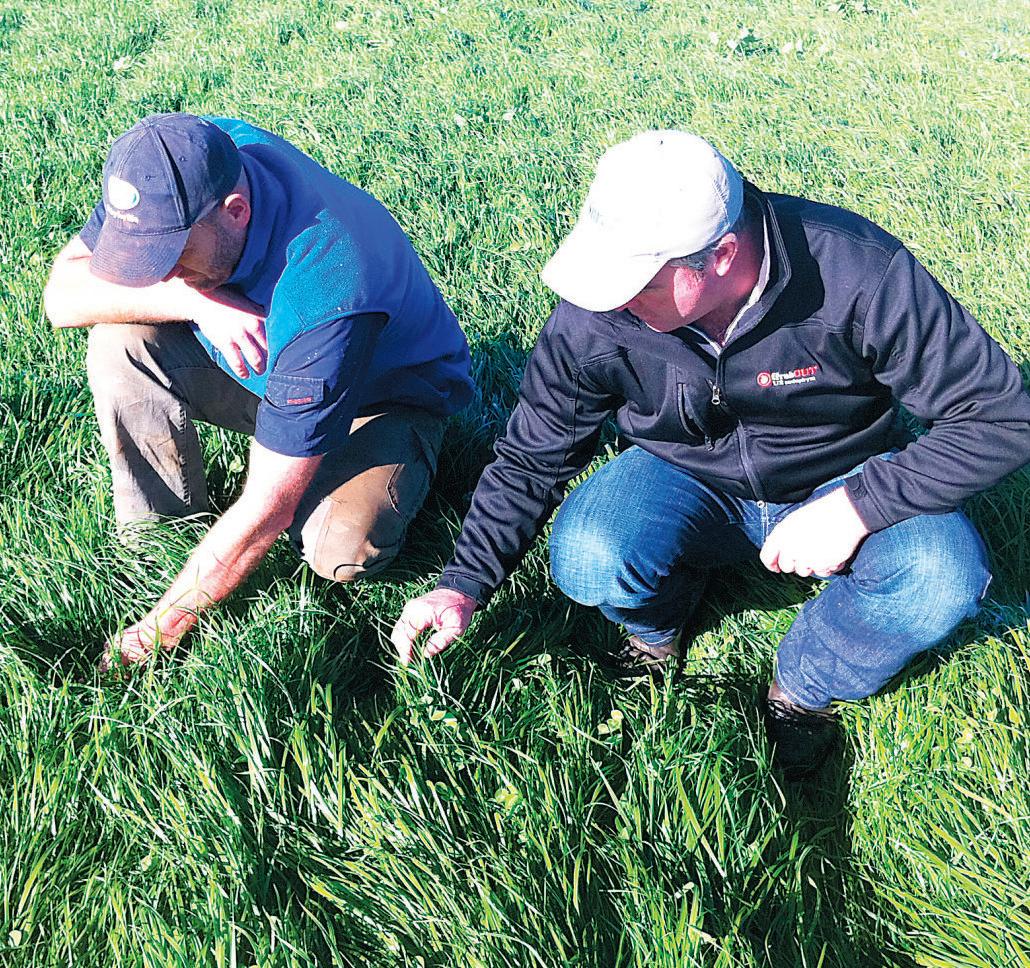
First, properestablishmentpractices, such as timelyplanting,adequate seedbed preparation, andappropriate seeding rates, can helpreduce the opportunity forwinter grasses to establish.
“Tocreateacompetitivepasture,itisalso essentialtochoose ahigh-quality Italian or perennial diploid ryegrass that is adapted to thesoiland climaticconditions of the area,” Mr Fishersaid.
Second,herbicidescan be used to











































controlwintergrasses before or after emergence “Selective herbicides, suchasScanner areeffective forcontrolling annual winter grasses and other grassyweeds, while leavingthe desirable ryegrassunharmed.”
Non-selectiveherbicides, suchas glyphosate and glufosinate,can be used forspot treatments or in fallowperiods to control barleygrass and winter grasses andother broadleafweeds.
Herbicidescan be used to control weeds beforeorafter establishment.

Pre-emergent herbicides areapplied beforeplantingoremergencetoprevent weed seeds from germinating.”
Third, grazingmanagement canalso be used to control winter grasses
“Heavy grazing, topping or harvesting can reduce theseedproduction of winter grassesinspring, while moderategrazing throughout the year can helpmaintain a healthyand competitive ryegrass stand.”
Fourth, themulti-yearsummerforage crop programmes.
“Wesuggest using astrategicrenovation programme using forage brassicas or turnips and pre-emergentherbicides in well worked soils canminimise the seed set of wintergrasses.”

In conclusion,amulti-pronged approach is an essentialcomponentofgoodpasture management,especially in avoidingseed set of winter grasses innew permanent ryegrass pastures.
Proper establishment,herbicide use, grazing managementand multi-year summer crop renovationsare alleffective strategies for controllingweeds.


SPECIALIST vegetable industry field daysreturn to VictoriaonThursday 27 and Friday April 28 when theVictorian Vegetable Field Days will be held at Catani in West Gippsland.
AUSVEG Vichas partnered with Stuart Grigg Ag-Hort Consultingand thetwo Victorian VegNET projects to run the event at Butler Market Gardens’ Catani farm. The organising committee of StuartGrigg, Rick Butler, Joy Pedersen, Dale Creed, Bonnie Dawson and DaniellePark have been working together since July 2022, supported by the major sponsor Elders and industry group Hort Innovation, to deliver an event that showcases the entiresupply chain to industry.
Field Days
The fielddays arean opportunity for growers to see upcoming vegetable genetics across ahectareofdisplay crops. Tenmajor seed companies demonstrating their lines areTerranova Seeds, Fairbanks Seeds,HM.Clause,Rijk Zwaan, BASFVegetableSeeds (Nunhem's), Enza Zaden, Bayer/Seminis, Lefroy Valley Seeds, South Pacific Seeds and Bejo Australia. In addition to seed demonstration sites, the field daysare also an opportunitytosee examples of innovativecropprotectionand nutrition in action from Platinum Sponsors Syngenta and Corteva, as well as six other trials from IncitecPivot Fertilisers, Stoller, Nufarm, Bio-Start, Omnia and EE Muir & Sons.
Gold sponsors

In supporting the event,VicVID has been well supported by over morethan 10 Gold sponsors, including seed companies Australis SeedCompany,Enza Zaden and amajor seedling supplier to the industry, Boomaroo Nurseries.
There willbefurtherdisplaysofcrop protection and nutrition products from Gold sponsors Haifa Australia, Grochem, Sumitomo and ADAMA.
Localmachinery agents VinRowe, GendoreTractors &Machinery and Brandt/ AgricultureJohn Deerewill have their mostexciting machines on display, and AgPick will be showing offtheir system, which promises to make the current piecerate system easier to utilise and better for both grower and worker
Attendees will be welcomed onsite by the national industry representative body AUSVEG, who willbeensuringgrowers follow correct biosecurity procedures,
including adigital check-in process. Butler Market Gardenshas been triallingdigitalcheck-in platformOnside in the lead-up to the event, which alerts to site visitors, steps them through their biosecurity protocols and alerts them to any risks.


The committee has invited special guests to present from the Events Hub marquee throughout the two days, including international spinach superstars distinguished ProfessorJim Correll andDrLindsey du Toit, who will preview the International SpinachConferencescheduled for the
following Monday.
Levy-funded extension project VegNET will provide an overview of activities available to growers across the stateand otherR&D investments across the country, including an overview of Gatton’s Smart Farm.
Aerial Solutions willbedemonstrating their drone sprayingservices, which can be utilised over open fields and glasshouses.
The benefits of cover cropping will again be on display after their successful presentation at 2020’s East Gippsland Vegetable Innovation Days. AFutureDrought Hub & VegNET Gippsland project, which has been trialling soil moisturemonitoring technology on-site, will provide an opportunity for further learning.
One of the greatest benefits expected to come from the event will be the opportunity for growers andotherindustrymembers tocatch up. For many it will be the first time to see each other after three long and challenging years.
All areinvitedto attendthe Elders Vegetable Industry Networking Eventon the Thursday night, which will be held in the nearby town of Bunyip.

Guests will be entertained by well-known comedian Dave O’Neil and local musician Emily Murdica.
Places arebeing snapped up quickly so registernow at https://www.trybooking. com/CFTKK
The FieldDayswill be officially opened at10am on Thursday, April 27 and run through until 2pm on Friday atButler Market Gardens, 200 McDonald Road, Catani.
For further information, contact Bonnie Dawson on 0407 683 938.
STAN and Denise Walker of Pearsondale's Charellen Poll Herefords have proven their superior grass-fed performancewinning the Carcase Awardfor apair of steers entered in the Lardner Park 2022 grass-fed trial.

Mr and Mrs Walker purchasedCharellen Poll Herefords from Denise's family about 30 years ago and have since managed the Pearsondale farm, gradually increasing the holding capacity over time, first entering the grass-fed trial in 2021.
The 47th Lardner Park grass-fed trial began at Warragul, Victoria, in July 2022, with 35 teams of mixed breed steers entered from around the state from 26 producers. Purebred entrants wereTaracombe Herefords, Tarwin Poll Herefords, Charellen Poll Herefords andMoorville Herefords, withMrWalker among the Lardner Park 2022 grass-fed trial winners announced on March 24 at FarmWorld, Lardner Park.
"I was surprised, quite elated actually," Mr Walker said.
"I actually rang Anthony Wellhams, who is the man whomanagesthe steersfor that six-month period and said, "Look, I can't come down Anthony; I've got alung infection, so not feeling like Ican travel".
"He said, "Aw,Ithink you'reupfor an award, so if you could really come down and make it".
"So we drove down and got there, got the awardand came home, so Ididn't see any of Lardner Park, really."
Charellen Poll Herefords steers recorded an overallpairdaily gainof 1.26kg and overallindividual gains of 1.35 and 1.17kg, winning the highest carcase scorefor the pairon 90.66 points, carcases scoring 88.15 and 93.16 points, respectively.
The steers had carcase weights of 278 and 297kg,respectively,and eye muscle areas of 77 and 88sqcm.
"Because it is atrail, people enter pairs effectively,and Iguess the thingthatset them apart was they ended up having very good carcases," Mr Walker said.
"Last year we wereabout 10th, so this year was abit of asurprise actually for us cause Ithink we were aboutseventh or somewhereonweight gain, so down the list abit on weight gains, but thereisareward for carcase, and obviously when they went over the hooks, they scored very well."
As Australia's only grass-fed steer trial, producers from multiple states have the opportunitytoassess cattle underindependently controlled grazing conditions.
Compliant with the Coles QA grass-fed program, the aim is to achievethe best outcomes during trial information and data collection and purchase price on carcase meat when the trial is finished in late November
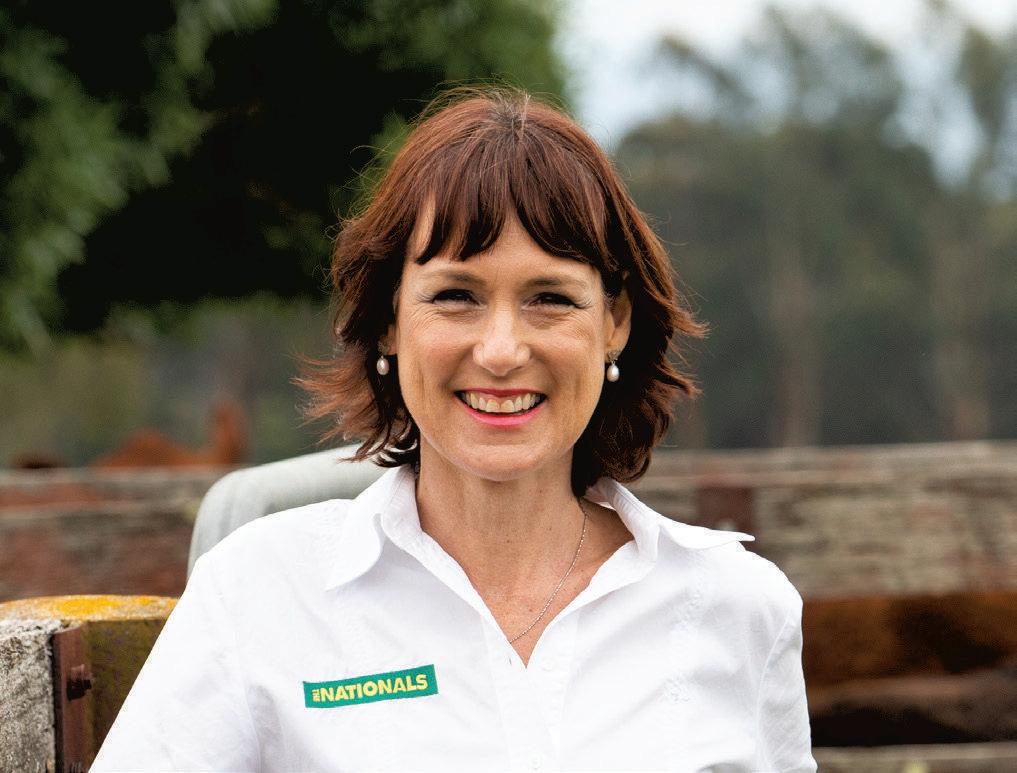

The fifth and final weighing was held on
November 28, 2022, beforethe steerswere transported to JBS for processing.
The final grid specifications are220-330kg hot standardcarcase weight.
"It's all done by MSA grading,so Meat Standards Australia's grading system, so they scorethe carcase for different things, fat, colour,intermuscular fat, eye muscle area, PH, which is part of the flavour of the meat," Mr Walker said.

"If you've got aPHthat is too high or too low, it can affect the taste and the flavour of the meat and tenderness.
"We've tried in the last four or five years, we've been abit morealigned to using not using size over our cows who have got those attributes, higher EMA, higher IMF and reasonable growth weights, so that's the thing we'vebeen concentrating on andI supposed having a win bare out the fact, well we think, that we'reonthe right track."
In summary,Charellen Poll Herefords selects genetics based on Breedplan data and phenotype, which includeabove-breed average traits for weight gain, eye muscle area, intramuscular fat and docility to procurethe high
"The benefit for is to see how w against other b ensurethatou ing strategy is s based," Mr W said.
Finishingfi

overall, Stanan Denise Walke Charellan Pol Herefords, Pearsondale, had few steers to choose from thisyearas the drop was mostlyheifers but entered calves sired by Ravensdale TrooperL179 and Ravensdale Spark M016.
"Weentere themto get guide on howth kill out," Mr Wal said.
ular hest quality cattle. r us in the trial westack up reeds and urbreedsoundly Walker fth nd er, ll e d a hey lker r
"Generally our steers aresold direct to the Greenham Never Ever program at 450-500kg live weight.
"The Lardner Park Trial is agood

educational trial with all the steers on the same pasture, and normally the Herefords performwell."
Mr Walker said the key was to have steers at the June entry of 300-350kg live weight to meet the end specifications of 220-330kg carcase weight.
David Meikle, Tarwin Poll Herefords, Meeniyan, placed second in the Weight and Carcase Awardand TimHayes, Tarcombe Herefords, Ruffy, won the Highest Eating Quality (MSA Index) award.
Tarwin Poll Hereford's winning team from the two entrants had acarcase scoreof 87.58and 83.78 points, carcase weight of 317 and 327kg, eye muscle area of 84 and 90sqcm, respectively and MSA Index of 60.13 and 58.46, an individual average daily weight gain of 1.46 and 1.56kg, and an overallpairaveragedailyweight gain of 1.50kg at the final weighing.
The pair placed second overallinthe combined weight gain and carcase award with228.32points, 1.53 pointsbehind overall winners, two Angus steer from TimWilson, AmphitheatrePastoral e.
tremendous results for the breed –weight gain,carcase and eating quality all go towards good viable cattlethat make money," Mr Meikle said.
Tim

TarcombeHomeland
sired Tarwin Poll Her overall second-pl steer,while the pair, placingse overall, was by Wirruna N146. David M regularly petes in c competit and Lardner steer maintai afocu traits n for s practica tle, incl adequat weight ability t ish, tracta mothering and stru sound "
dP177 ed ereford's lacing other eventh sired Nolan
Meikle comarcase tions, the rPark trial, ining us on sneeded ound al catluding te gain, yto finability, ability uctural dness.

"It was

"Herefordcattle have been consistently reliable in this competition. We make our selections in June, and over the 10 years, the cattle always meet the specifications.

"This competition is theretobedominated by Herefordcattle, and Iwould love to see morecommercial purebred and crossbred entriesfromaround Victoria and interstate.

"Itleads to theHerefordstrengths of being able to grassfinish. Iget abenefit out of the competition promotion-wise –we put our cattle out theretobechallenged and tested, and that's apositive."
Tarcombe Herefords has been aregular entrant in the steer trial with both purebred and Hereford-infusedsteers, achieving consistent results, finishing eighth overall in the Lardner Park 2022 grass-fed trial and winning the MSA Index component.
TarcombeHerefords winning team had a carcasescoreof86.34 and 88.87 points, withthe carcaseweightsofthe winning steers for eating quality 254kg and 253kg, eye musclearea78 and 65sqcm, andMSA Index 63.79 and 62.9, respectively.
The eating quality win reaffirmed the stud's breeding focus on increasing muscle, marbling, carcase quality and finishing ability.
"Tohave Herefords represented among the winners in the weight gain, carcase and eating quality says alot," Mr Hayes said.
"It is not an easy competition to win as thereare some large commercial operations supplying the supermarkettrade competing with teams.
"I encourage moreHerefordbreeders to get behind this trial; next year,I will have ateam of Herefordand Hereford/Charolais steers."
SalelocalbreederStanWalker isnow preparing for Lardner Park 2023 grass-fed trial.
THEVictorian FarmersFederation (VFF) says regional roads won’t be able to cope with futuresevereweather events if they arenot maintained to abasic standard.
In asubmissiontothe federal parliament, the VFF argues that alack of road maintenance funding exacerbated damage caused by recent flooding.
The VFF President, Emma Germano, who is from Mirboo North, said farmerswere frustratedthatgovernments continue to neglect road maintenance.
“Enhancing the resilience of the road network to deal with extreme weather events is important, but it can only be achieved by ensuring thereisregular maintenance to keep them at an acceptable standard," she said.
“Maintenance funding keeps going backwards and worryingly Victorians keep risking their lives on dodgy and dangerous roads.”
VFF transportand infrastructure committee chair, Ryan Milgate, said that in planning for resilience, the government needsto take into account changes in network usage and the increasing demands placed on the roads by high-productivity freight vehicles.
“Resilienceisnot only about the gravel
and bitumen, but the planning processes around it too,” he said.



“The standardand condition of roads must be up to the task of carrying the freight vehicles we use to get food and fibre to market. That’s why the VFF is advocating for the Victorian Government to undertake astate-wide agricultural freight strategy, to betterunderstandwhere investments need to be targeted.”
Mr Milgate also said that local government must be better resourced to get on with the job of fixing their road networks.
“Weare seeing shires in the north of the state facing repair bills of over $50 million in the aftermath of the floods. The Victorian Government has cut its Fixing Country Roads Program, which is badly needed to help local government plan and get on top of road rehabilitation.”
The VFF also supported calls by the newly formedRuralRoads Alliancefor a$5.5 billion emergency funding package in the upcoming federal budget.
“We’llcontinuecalling onthe Victorian and Commonwealth governmentsto increase the funding available to regional roads assetmaintenance,” Mr Milgate concluded.

APPLICATIONS arenow open for Nuffield Australia’s 2024 Scholarship program, which for the first time includes scholarshipsaimedatdroughtresilience study topics.
The FutureDrought Fund (FDF) is investing $1.6 million through Nuffield over the next two years to help farmers increase their knowledge of drought resilience and better preparethemselves and their communities for achanging climate.
Scholarswillhave the opportunity to

travel overseas to study drought resilience and learn frominternationalleaders in the field.
Eachscholarship isvaluedat$35,000 andfarmers and others working in food and fibreproduction aged between 28 and 45 should apply now.
Applications close on June 92023.Find out moreabout the Nuffield Drought Resilience Scholarships and apply at: nuffield.com.au/how-to-apply
AGVIC Talk podcast is back for season five, this time talking about the futureof Agricultural Technologies (AgTech) and Energy.
From solar-powered poultry farms to on-farm dronetrialsand the difficulties of connectivity in rural and remote areas, this season covers everything you need to further understand the evolving world of AgTech and Energy.
The series will help farmers learnwhat AgTech is, what energy solutions areavailable and how they can use them to improve
productivity and efficiency on-farm.
These 14 episodes arethe latest in the AgVic Talk series, which began as apilot in August 2020 to cover contemporary commentary on how members of the agriculturalcommunity recover, grow, modernise, protect, and promote Victorian agriculture.
Youcan subscribe and listen to AgVic Talk wherever you get your podcasts: Subscribe to AgVic Talk on Spotify, or Subscribe to Apple podcasts.


GIPPSLAND transport businesses will face increased costs and reduced profitability if the federal government increases taxes on truckies across Australia, according to local MP Darren Chester
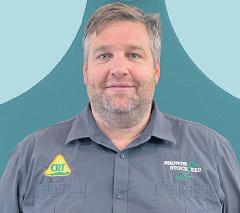
The Federal Member for Gippsland said the Labor Party had refused to rule out aproposed increase to the heavy vehicle road user charge, which would affectevery owner operator and transport business in Gippsland.
Mr Chester said the Minister for Transport,Catherine King, had failedto rule out tax increaseswhenspeaking in federal parliament last week.
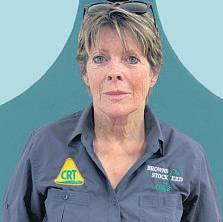
“The Minister was asked directly about the proposed 10 percent increase each year to the heavy vehicle road user charge
andshe would not give any reassurance that truck drivers wouldn’t be affected,” Mr Chester said.

“A tax increase in the current economic environment wouldbedevastatingfor local transport businesses. Every product we consume leaves afarmon atruck and arrives at our shops on atruck, and they arealready dealing with theincreasedcosts of fuel, maintenance and insurance.”
The Minister has confirmed the Federal Labor Government is considering an increase to the heavy vehicle road user chargesonfuel andtruck registration costs by up to 10 percent annually over the next three years.
“The proposed increase would see truckies pay up to 36.2 cents per litreoftax
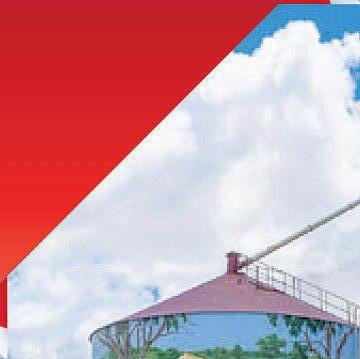

from the current 27.2 cents according to the National Transport Commission,” Mr Chester said.

“Theproposed‘truckie taxes’ willonly driveupthe cost of living pressures on families and also put morebusinesses at risk of not being able to continue operation and closing their doors.
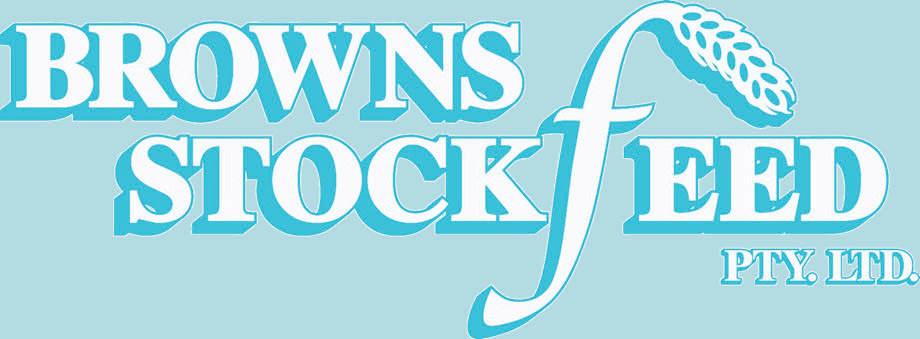
“Every single submission to the consultation process has rejected the proposal includingsubmissions from the Australian TruckingAssociationand the National Farmer’s Federation.


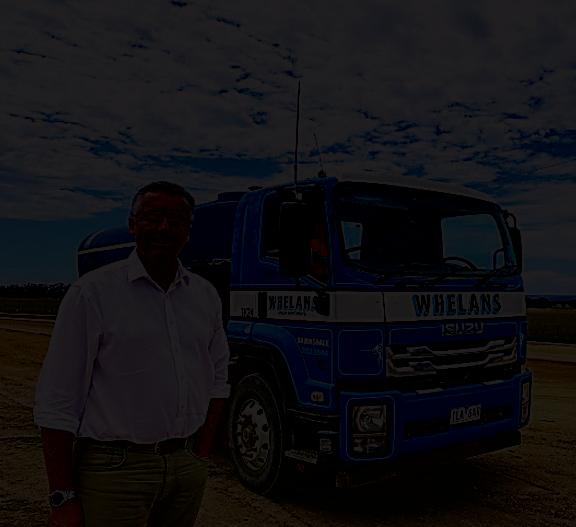
“The Minister needs to listen to the industry and not place further inflationary taxes on truckies which will only drive up the cost of living even further.”


PASTURES affected by flooding and severe waterlogging will need some extra care this season to re-establish healthy ductive pastures
y focusing on soil testing, soil tematures, seed depth, irrigation, weed trol and grazing management, this will help with pasture re-establishment testing is highly recommended ter flooding, sandy soils can have ues with leaching of various nutrients, h as sulphur potassium and nitrogen heavy soils that have been inundated prolonged periods, denitrification can ur eviously planned fertiliser applicans may need to be adjusted to suit soil test may also indicate the need gypsum application to help build and tect soil structure
oil temperature is a critical aspect of pasture establishment The ideal soil


temperature for sowing varies depending on the species


For ryegrass and clovers, the ideal soil temperature for germination is between 20 and 25°C Persian and Shaftall clover can withstand higher soil temperatures of up to 35°C



Oats have an ideal soil temperature range of between 10 to 25°C, while wheat and barley prefer temperatures a couple of degrees lower than oats
If you are unsure of soil temperatures, a good rule of thumb for ryegrass and clover is to sow when daily maximum air temperatures for five consecutive days average less than 25°C Above these temperatures seeding establishment is reduced significantly and pastures may need to be resown
The sowing depth of seed is proportional to the seed size A general rule of sowing is that sowing depth should be twice the length of the seed For example, ryegrass
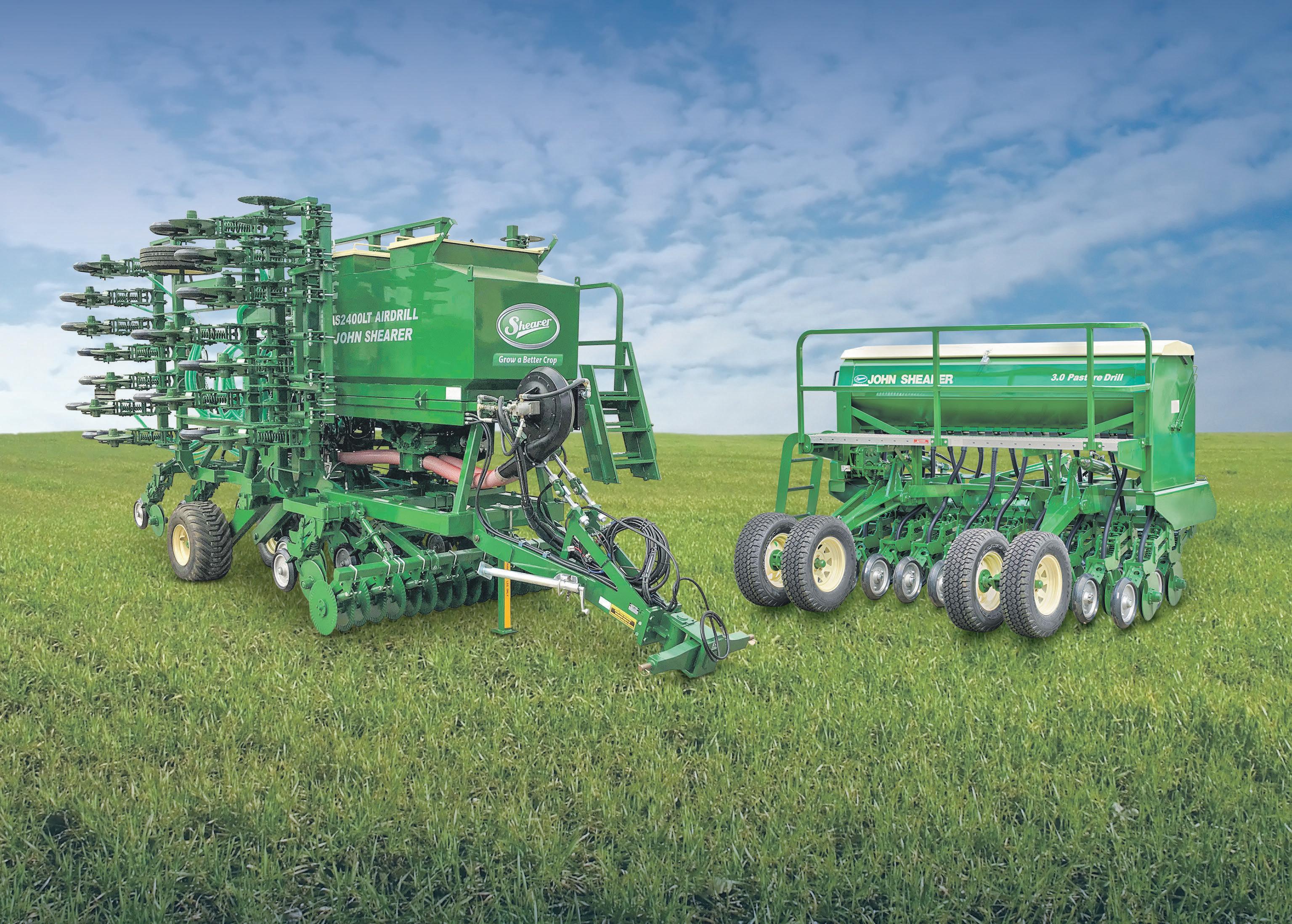


seed should be sown at 1-2 cm depth
If seed is sown too deep it will increase the time it takes to emerge, or it may fail to emerge at all

To achieve a dense productive pasture aim for plant densities of 600 seedlings/ square metre Plant densities should be measured one week post emergence If the plant density is below 600 seedlings/ m2, action may be required Pasture with counts lower than 80 per cent will require more drastic action to perform at their best Newly established seedlings are more susceptible to moisture stress than established plants
Depending on the season, the first irrigation will typically use 1 5 ML/ha with subsequent irrigations requiring 0 5 ML/ha depending on soil type and irrigation layout
After the pasture sward is established, the first grazing is crucial to get right, as it
can set the pasture up for the remainder of the season The pasture should be 10 cm high and at least at the two-leaf stage
Before grazing, check if the root sys is developed enough by using the ‘ p test’ To complete a ‘pluck test’, tak tiller between your fingers and pull motion to mimic a hungry cow ’ s bit it tears without pulling the plant ou the ground, it is ready to graze Graze pastures to a residual heigh 4-6 cm This will help promote tiller minimise damage to the pasture and the residual height for future grazin

On-off grazing should be used to achieve residuals of 4-6 cm when grazing new pastures

It is vital to get the basics of pas establishment and grazing right to en the best result possible and prod healthy productive pastures
EPAVictoria (EPA) officers returning from inspections in South Gippsland's dairying districts say farmers should be putting dairy effluentpondson their'to do' list beforewinter sets in.
The officers visited 10 farms and issued one official warning, but in most cases, gave compliance advice to help farmers to keep their dairy effluent management systems up to standard.
EPAGippsland regional manager,Jessica
Bandiera, said last year's wet spring and flooding in parts of the state werereminders of the hazards of an overgrown or backedup dairy effluent system.
"The threat from aneglected dairy effluent management system is in overflows and leaks,and any rainyweather can send backed-up effluent pouringover the edge," Ms Bandiera said.
"Dairy farmers need to get some maintenance done on their dairy effluent ponds,















pumps and pipes as soon as they can. It'sthe mosteffective waytomakesure dairy effluent is afertiliser that's good for your farm, not apollutant that threatens waterways and neighbouring properties."



The pollutants can include nutrients, pesticides, fertilisers, milk from washdown, spillage and waste milk, and contaminated soil washed away by heavy rain.
Letting those pollutants escape into channels, drains and waterways can reduce

oxygen levels, kill aquatic life, encourage toxic algaeand create thedangerofdisease.







"Dairy farmers can prevent effluent ponds from overflowing by de-sludging, controlling weeds and irrigating the water component to pasturewhen weather conditions are appropriate," Ms Bandiera said.
"Theend ofsummeristhe besttime to clean out ponds ahead of winter wet weather while keeping effluent irrigation equipmentingood condition and preparing to deal with any pipe or pump failures."
THE million-dollar small log line at Radial Timber in Yarram, which can create engineered timber and promises to usher in anew era for timber processing, is not operating. It has no wood.
Radial, which is building itsown hardwood plantation resource, still relies on timber from VicForests until its firstplantations arematureenoughtobeharvested. That’s at least 10 years away.
Now,the innovative timberprocessor is in limbo until the Supreme Court case involving green groups and VicForests is resolved. VicForests’appeal againstthe Supreme Court decision over habitat for the greater glider,which has effectively halted all native forest harvesting, has just started.
“We’ve got afew logs, as low as we have ever been in 20 years of operation,” said the managing director,Chris McEvoy.
In the interim, Radial has redeployed its skilled workforce into plantationworkthinning, slashing and fencing. It cannot affordtolose trained staff.
Mr McEvoy explained that the small log line formed part of apeeler plant, “technology that’s been around for awhile, but is quite innovative”.
“You can get very small logs and peel them down to 20-30 millimetrecore- basically down to abroomstick. The feed stock is very small diameter thinnings from plantation or native forest,” he said.
The round log is peeled into veneer sheets, dried, glued and pressed.
“You formengineeredtimber; structurally you can in theorymake mass panels,even better than CLT(cross-laminated timber), because CLTisstill sawn timber
“Toget sawn timber,basically you have 30-35 per cent recovery from alog, whereas to peel alog, youget 60pc recovery-getting twice as much wood out. The only waste is the 30mm core. The rest is peeled; thereis no sawdust or woodchips,only peeling from the outside. It’s areally efficient way to get high volumes from small diameter logs.”
CLTinvolves timber planks glued together under high pressuretocreate panels, which, when erected in abuilding, are as strong as steel. Chris said with all the interest in engineered timber and mass panels, the technology enabled processors to get as much as possible out of the current resource.
“If thatmeans higherrecovery from existing resource, it’s definitely afield that needs to be explored further,” he said.
Compared to the couple of big LVL (laminated veneer lumber) plants in Australia, built around atimber resource, Radial’s microLVL plant required only 15,000 tonnes of wood ayear
This would produce 7500 tonnes of LVL at acost between $5-6 million.

“I look at it as ademonstration plant. I’d like to see 10 of these plants built in Victoriaaroundaresourcesothat the combined effect of 10 of these plants
would be processing about 150,000 cubic metres from small logs. For the cost of 10 plants - $50m-$60m - they are producing the same product. Work in tandem, build the plant around the resource, not the resource around the plant.”
Chrissaidthe peelerplant was abetter waytouse logs traditionallyusedfor woodchips.
“One hundred per cent paper is valueadding, but LVL and engineered wood are value-adding to another level. We’retalking LVL retail for $3000/m3-a high value high demand product,” he said.
This was in addition to normal radial sawing, which saws wood into wedges like the wedges of acut cake; thecompanyhas thecapacity to process 15,000m3 of radial timber ayear.Radial and peeler processing would create anannualpeakoutputof
THE small log line is actually four lines in one:first, logstoo smallfor anything willbe chipped as biofuel; second, poor formwoodornot a“greatstraight”, will be cut for firewood; third, small pieces and inadequateas apeeler log will have sapwood removed and be made into apost, for example, as an agricultural post; and fourth -the best of best will go through the peeling line for LVL.
In this way, Mr McEvoysaid, the resource, either from plantation or native forest, would produce various products.
“Nothing is wasted, everything is used.”
Radial uses timber from mixednative forests, not Mountain Ash timber
Any waste will be used in abioenergy plant that Radialaims to install. Thepyrolisis plant can produce arange of products, not just heat and energy, such as biochar
Amodularunit is being installed next month(April), which will process half a tonne an hour,four tonnes of waste aday.
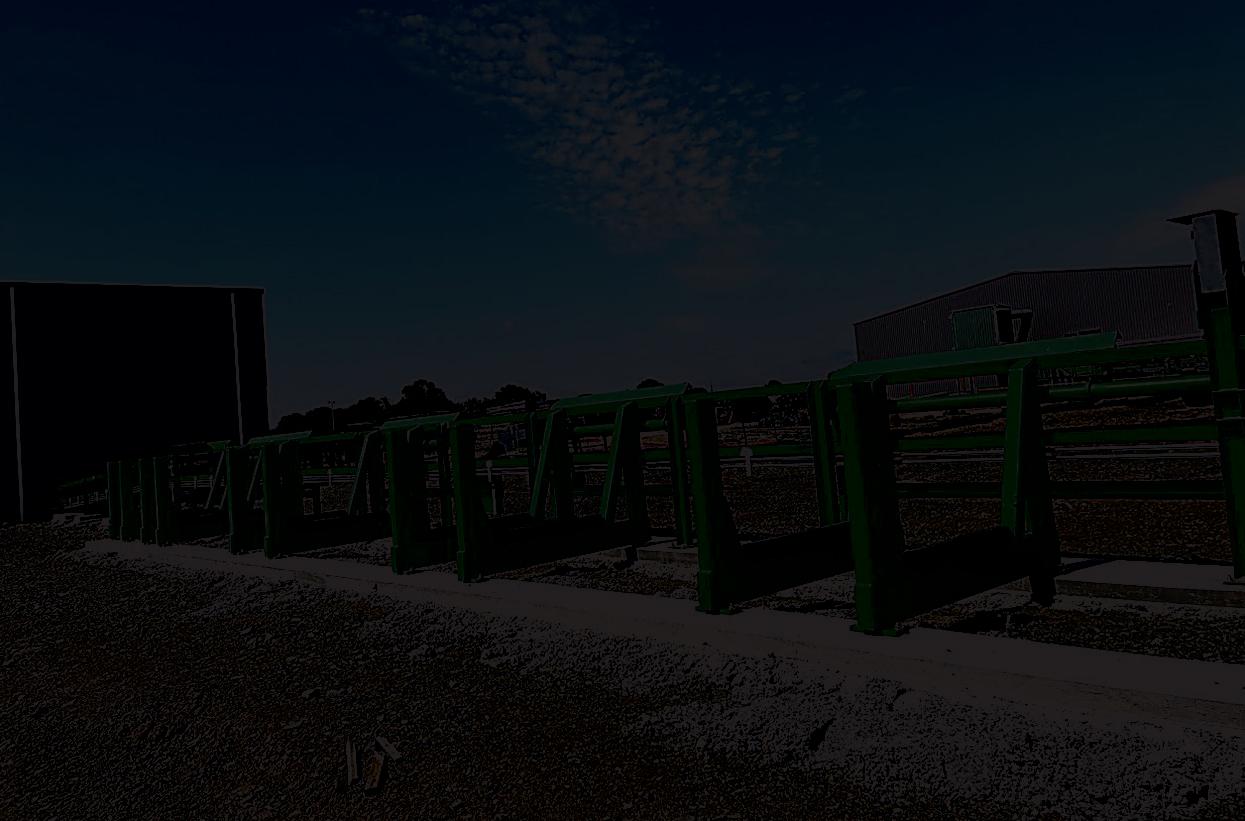
Mr McEvoy saidthiswould process two tonnes of carbon to make biochar,which could produce awhole range of products such as fertiliser
“The premium product for biochar is timber.Itisnot contaminated,burns efficiently and has an end product in high demand,” he said.
Mr McEvoy saidthat if Radial could demonstrate the model that was scalable, carbon could come into that model.
“It may partner with carbon credits and the social licencethat comes with it,”he said, which was far superior to invest in carboncredits rather than into inaccessible forest anywhereinthe world.
“That’sthe lazy way; the harder way makes adifference. That is morereal -something you can touch and smell, and see the result of the process,” he said.
Radial is still commissioning the small plant and peeler line.
“The sad thing is, we have nothing to put through it. It’s not awhite elephant, it will process alot of timber,but at the moment, we would like to have apaddock full of wood to use.”
About another $4 million is needed for equipment to complete the peeler plant.
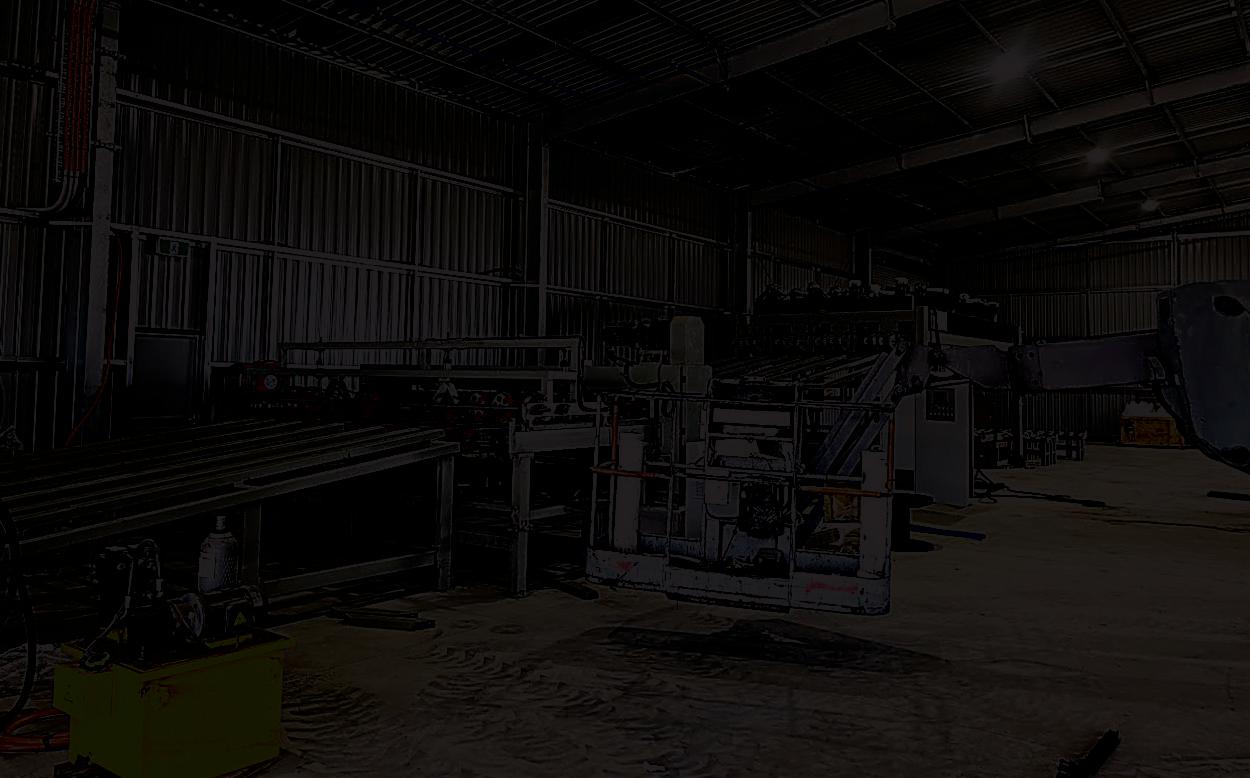
However,the show still rolls on; Radial has two forestry grants for two Masters students, whose research aims to peel a whole range of species, from native forest to plantations, to gaugewhich peels the best, assess the drying characteristics,and build prototypes.
“It’s aamodel of whereweare going to go with processing,” he said.
Radial has its own 2000hectaresof land, of which about 1000ha is planted to durable hardwoods.

“Theidea was in the last12months to have have planted 100ha; we always plan to do 100ha ayear,but it was wet last year, we could not get on the land,” he said. The planting is all self-funded.
“Wehave the land and not all the cash. This is holding us back,” he said.
Promises of government help, subsidies for plantations, had so far come to nought.
“If we had guidance it could happen. The land availability and suitable sitesare being reduced and we arestill not putting enough trees in the ground,” he said.
“We started planting trees 10 years ago. We want ourown resource but werepromised we would have native forest resource until 2030. We arestillatleast 10 years short. That is our problem -what do we do for the next 20 years? Take way native forest -it’s apotential disaster.”




AS many Victoriansstock up their firewood supplies for winter,the Conservation Regulator (CR) is urging people to source firewood responsibly and legally Illegalfirewood collectors have caused significantdamage to parks, forests and reserves in recent years, according to the CR, which saysbirds, reptilesand some native mammals rely on hollows in both standing and fallen trees for habitat.
The illegal collection of firewood, if made up of maturetrees and limbs, also has potential to harmAboriginal scarred trees, destroying Aboriginal cultural heritage.
Domestic firewoodcollection from public land is only available in designated areas duringthe autumn and springfirewood collection seasons.
During these times, people can collect a



maximum of two cubic metres of firewood per person per day and amaximum of 16 cubic metres of firewood per household per financial year.Only fallen timber without hollows can be collected.
This year the Conservation Regulator is targeting firewood theft, with Forest Fire Management Victoria and Parks Victoria through Operation Hollows. Authorised officers areeducating the public about the rules andpenalising thieves.
Anyone caught breaking firewood collection rules can face on-the-spot-fines of $740 under the Forests Act 1958 or amaximum penalty of $9246and/or one year jail if the matter is taken to court.

Last year the Conservation Regulator laid 625 charges and issued 85 infringement notices and 16 official warnings for firewood
CLIMATE changeimpacts and the adaptationonAustralian farms areinthe final webinar of the 2023 FarmSafety Teacher Program.
Reduce Harmonthe Farmwebinars are being conductedby AgricultureVictoria and Central Queensland University.

In recent decades, Australia has seen ashift towards higher temperatures and lower winter rainfall, which has had big effects on many farmers.
Increasingly intensenatural disasters such as firesand floods havealso affected many rural areas and emerging biosecurity risks arealso on the radar
Despite these trends, thereremains much uncertainty over thelong-runeffects of
climate changeonfarmbusinessesand futurechanges in climatecould make conditions tougherfor Australian farm businesses in the long-term.
Farmers are adapting and getting better at handling these morevariable conditions.
The webinar will explorepotential climate changeprojections onregions across Australia, how they may impactfarming businessesand whatsortofactions farmers can take to build farmer business resilience.
The webinarwill be held on Tuesday, April 4from3.30-5pm.
For moreinformation:
Phone 0499 938 678.
offences, including cutting or taking fallen or felled trees, and disturbing, damaging or destroying wildlife habitat.
Cases that resolved in the Magistrate Court system faced convictions, fines and had chainsaws and trailers forfeited and destroyed.
It is alsoimportant firewood collectors understandtheir obligations underthe
Aboriginal HeritageAct 2006. All Aboriginal places, objects and Ancestral remains are protected in Victoria. It is an offenceto harmAboriginal heritage and substantial penalties apply.
People who think you have found ascarred tree or other Aboriginal cultural heritage, shouldcontact theirrelevant Registered
AboriginalParty (if one has been appointed) or First Peoples -State Relations on 1800 762 003.
For details of wherefirewood can be collected, visit:www.ffm.vic.gov.au/firewood/ firewood-collection-in-your-region.
More information about firewood collection rules can be found at: https://www. vic.gov.au/collecting-firewood.
The community can report the illegal cutting or removal of firewood anonymously by calling136 186. Financial assistance is available for people on low incomes who buyfirewoodfor heating. https://www.ffm.vic.gov.au/firewood/ energy-concession-and-support.
AUSTRALIA'Strusted rural charity, Rural Aid, hasopened its fourth annual Spirit of the Bush photographycompetition, with the 12 winning photographs to be used in Rural Aid's 2024 calendar Rural Aid chief executive, John Warlters, saidhe wasexcitedtosee what the bush's talented photographers capturethis year
"The photographs that aresubmitted arealways breathtakingly raw, real, and reflect the highs and lows of life on the land," Mr Warlters said.
"Last year,wereceived morethan 1100 entries from across the country, making it very hardtowhittle down to just 12 winners.
"I hope to see dozens of photos of successful crops, happy working dogs and fat cattle.
"On the flip side, the pictures of flooded creeksand empty paddocks tell asobering, but equally important, story."
Photographersare encouraged to submittheir photos to the themesof family,community,mates, faces, eyes, tough, golden hour,orall things rural. Winners will be awarded afeaturein the 2024 calendar and a$250 pre-paid VISA card.
The competition closeson May29, 2023.
To enter the competition, entrants must submit ahigh-resolution landscape image via Instagram or Facebook with the hashtag #SOTB2023 and tag @ruralaid in the picture or uploadtheir photo through the Woobox link: www. ruralaid.org.au/spirit-of-the-bush
Rural Aid's 2024 calendar will be available for purchase later this year
Proceeds will directly support Rural Aid's range of programs that help farmers and their families.
The competition'sterms and conditions canbefoundatwww.ruralaid org.au/spirit-of-the-bush

Enduro Tags are changingthe way farmers keep track of their stock forever.

Enduro Tags are Australian designed and manufacturedand tested locally in Warragul.
The company has designed acomplete range of Australian NLIS accredited sheep and cattle tags, and acomplete rangeof visual management tags with aunique DOUBLEGRIP technology which significantly improvestag retention andkeepsthe tag central in the ear, for greater visibility.

You will not need to go anywhere else to fulfil your tagging requirements.

These tags will be the best value ear tags you have ever used.
You can now buy online: visit www. endurotags.com.au
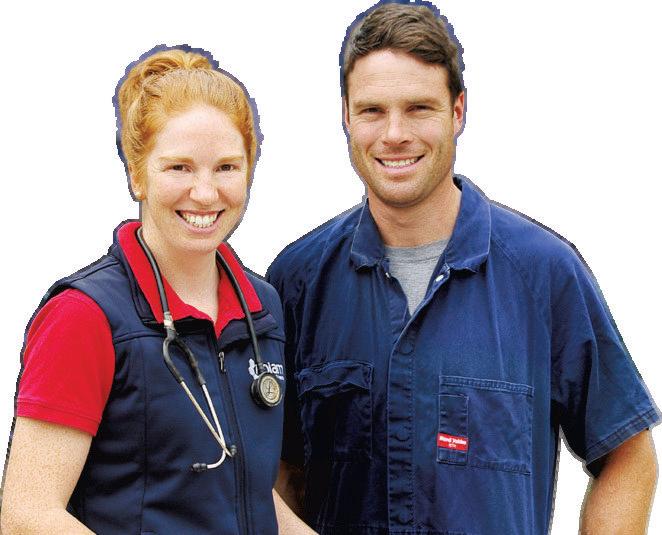

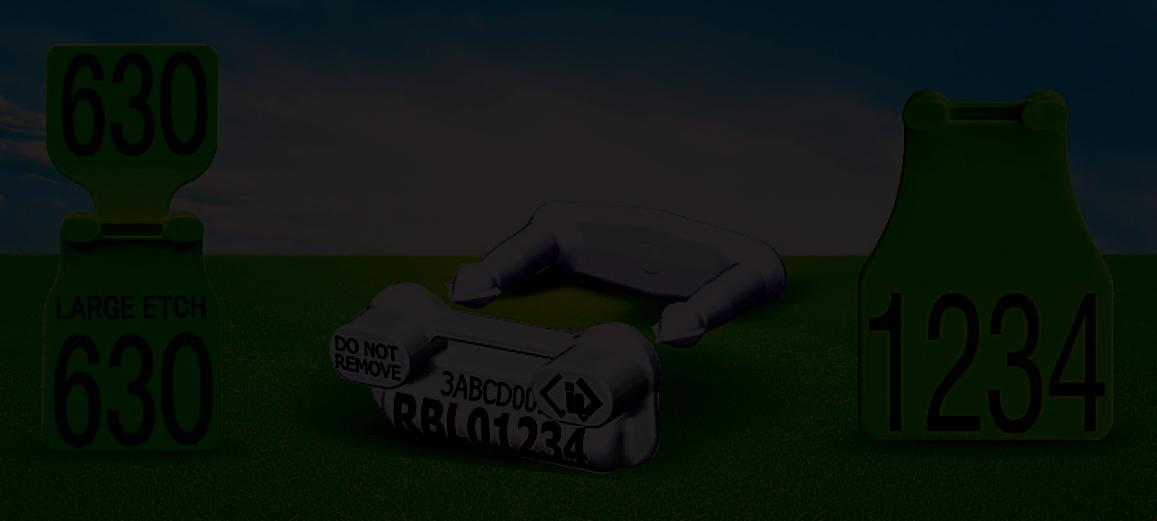
LEATHORN DAIRIES, Maffra, Victoria
WE started using Enduro Tags in 2017 withboth theirmanagement and NLIStags.
Previously we were losing asignificant number of tags and would be replacing 5 percent per month, and we milk1000 cows.
With EnduroTags, we still find we lose some tags, but nowhere as many as in the past.
We findusing EnduroTagsNLIS and their management tags has given us amassive improvement with tag retention and they have great transponder functionality.

We havent found anynon-readers and the tags read really well.
Theirmanagement tagsnow haveadarker and larger serialnumber and our staff found them really easy to read.
WITHNELL DAIRY, Carapook, Victoria
HAVE been purchasing Combo 30 NLIS and management tags since 2016.
Feedback: Loss of other NLIS tagscauses much disruption to their cow ID records and cow management withincreased labour time spentdraftingno tag cows and re applying tags. Have purchased x350 plus C30 tags since 2016.
Feedback:would not purchase any other NLIS tags for their heifers.
Finds retentionexcellent withC30 and expects only small numberoflosses per year across the dairy herd.


Findstransponderfunctionality has been normal since the 2016 batch.


C30 tags read well in the rotary dairy and with their drafting system.
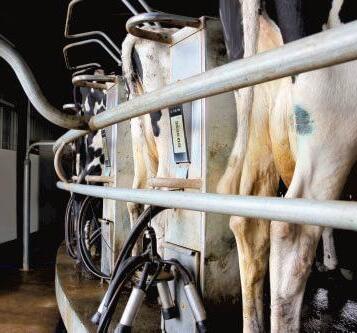
DK &HCCampbell, Mirboo North, Victoria
BEEF farmers have been purchasing x200 Combo 30 NLIS every year since 2015.
Feedback. Application good. Retention excellent.
No transponder issues reported back to him.
Product differentiates his stock from neighbours.
Used management tags over same period with very high satisfaction.
BILL GRAY
BILLGray manages adairy operation as well as running beef on his own farm.
He has been using Enduro Tags for the three years on both beef and dairy cattle.

For quicker recognition, dairy cows have atag in both ears whereas the beef cattle are tagged in one ear.
Dairy calves are tagged at weaning when they are approximately 12 weeks old.
Billsaidthe Enduro Tags are easy to apply and do not damage the ear.
Since changing to Endurotags they have notlost atag.
Bill has also been very happy with the tag visibility.
The high tags they use have three faces to increase visibility the hightag front and back as well as the face of the lower normal ear tag.

APALLETT &JMORRISON &B&J
AG CONTRACTING &LIVESTOCK, Willowgrove, Gippsland Vctoria




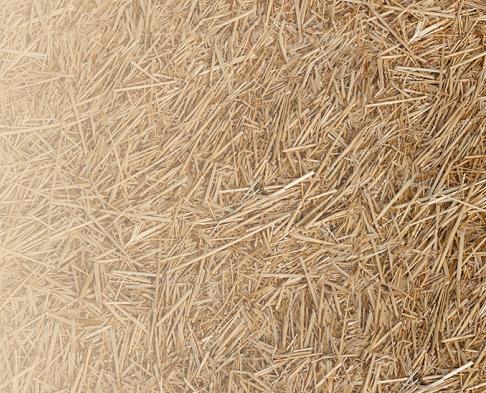
JEFF is adistributorofEnduroTags
through his Ryrie Farm Services business where he provides arange of services to dairy and beef producers including artificial
insemination, pregnancytesting and freeze branding.

Jeff also uses Endurotags on his own beef property.
Jeff said distributing Enduro Tags is a logical extension to his business, particularlyasthey are aqualityAustralian made product.
My clients are very happy with the reliability and readability of the tags.

He also highlighted the unique doublepin featuresignificantly increases tag retention and ensures the tag does not twist this means the tags stay straight and easy to read.
Manyclients also like the high tagswith writing on the front and back for increased visibility when you add thelowerear tag, three faces of the tag can be seen in each ear.
The Australian dairy industry has become the first in the world to release acomprehensive national set of guidelines to help farmers looking to invest in innovative feeding and housing solutions avoid costly mistakes.
The release by Agriculture Victoria and Dairy Australia of the 245-page ‘National
Guidelines for Dairy Feedpadsand Contained Housing’ provides an invaluable resource to farmers across all Australian dairy regionswhenmaking decisions around feeding and housing solutions for their herds.
The new national guidelines have been developedspecifically for Australian


conditions whilst drawing on consultation withagroup of 21 experts from around the world, offering farmers information on current global best practice.

The Australian dairy industry todayis still predominantly grazing based but in recentyears agrowingnumberoffarms have transitioned to contained housing facilities with zero grazing.
Mr Scott McDonald, Agriculture Victoria’s Program Manager Dairy Services, has worked closelywith many farmers overthis transition phase and believes the shift has beeninorder to address arange of farming and regional specific challenges including climate adaptation, water availability, workforce efficiencies, improvement in environmental management, and enhanced animal health and production outcomes.
“These guidelines, which are the first of their kind anywhere in the world, draw on the insights of international, Australianand Agriculture Victoria’s experts to provide Australian dairy farmers with aglobal best practice approachwhile alsoconsidering our local Australian conditionsand regulations,” said Mr McDonald.

“They will be an invaluable resource for all Australian dairy farmers.”
Dairy Australia’s Feeding and Farm Systems LeadKarenRomano said, “It’s vital that any farm looking to move to intensive farming systemscarefully consider what is the right system for their farm, in both the short and long term to avoid costly
mistakes.”
“Changing land use to intensive farming is asignificant investment and therefore requiresmore complex decisionmaking, planning and alonger term vision for the farm,” said Romano.
To assist farmers in carefully assessing the right intensivesystem for their farm, Dairy Australia has worked closelywith AgricultureVictoria to support the production of the first-ever National Guidelines for DairyFeedpads andContained Housing as adecision-making resource.
The release of theguidelinesispart of Dairy Australia’s ongoing efforts to enhance farm business management by providing dairy farmers with access to business planning and risk management tools and insights to support on-farm decision making and improve profitability.
Dairy Australia, Agriculture Victoria and theNSW Government are also investing in thedevelopment of adecision-making tool called the Farm System Evaluator which will allow farmers to assess their preparednessfor transitioning to an intensive system.
Anational multi-year study of farms that have already moved to contained housing systems (zero-grazing system) is also being undertaken by Dairy Australia to help farmers understand potential impacts on their short and long term financialperformance.











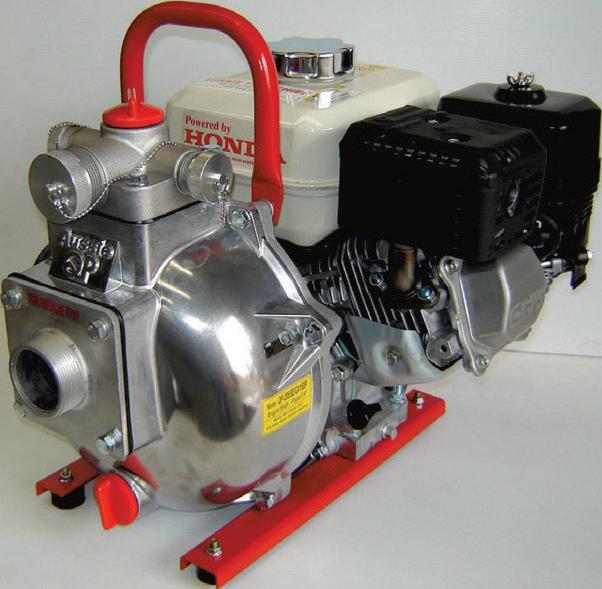


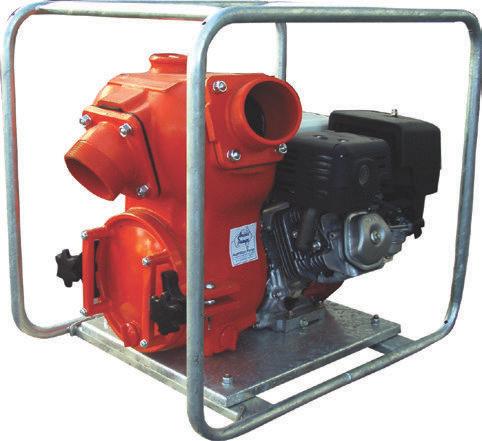


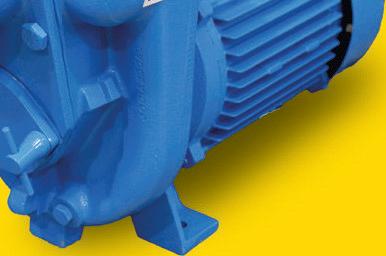





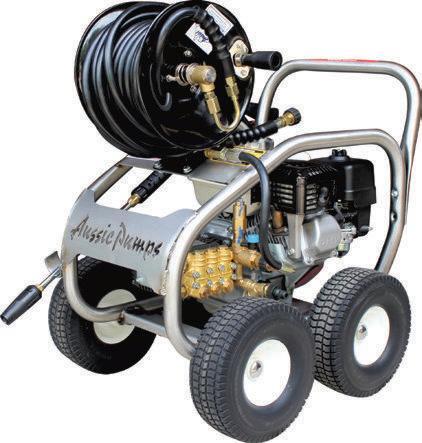

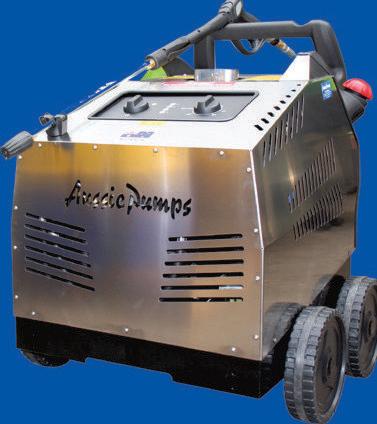
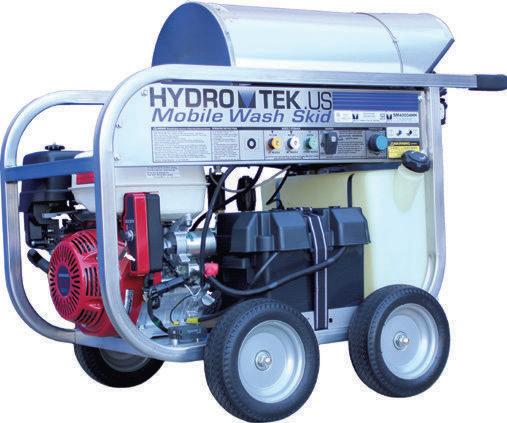




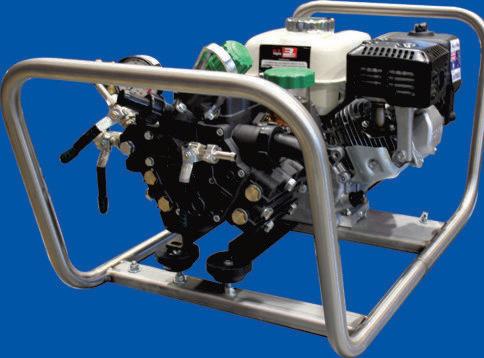








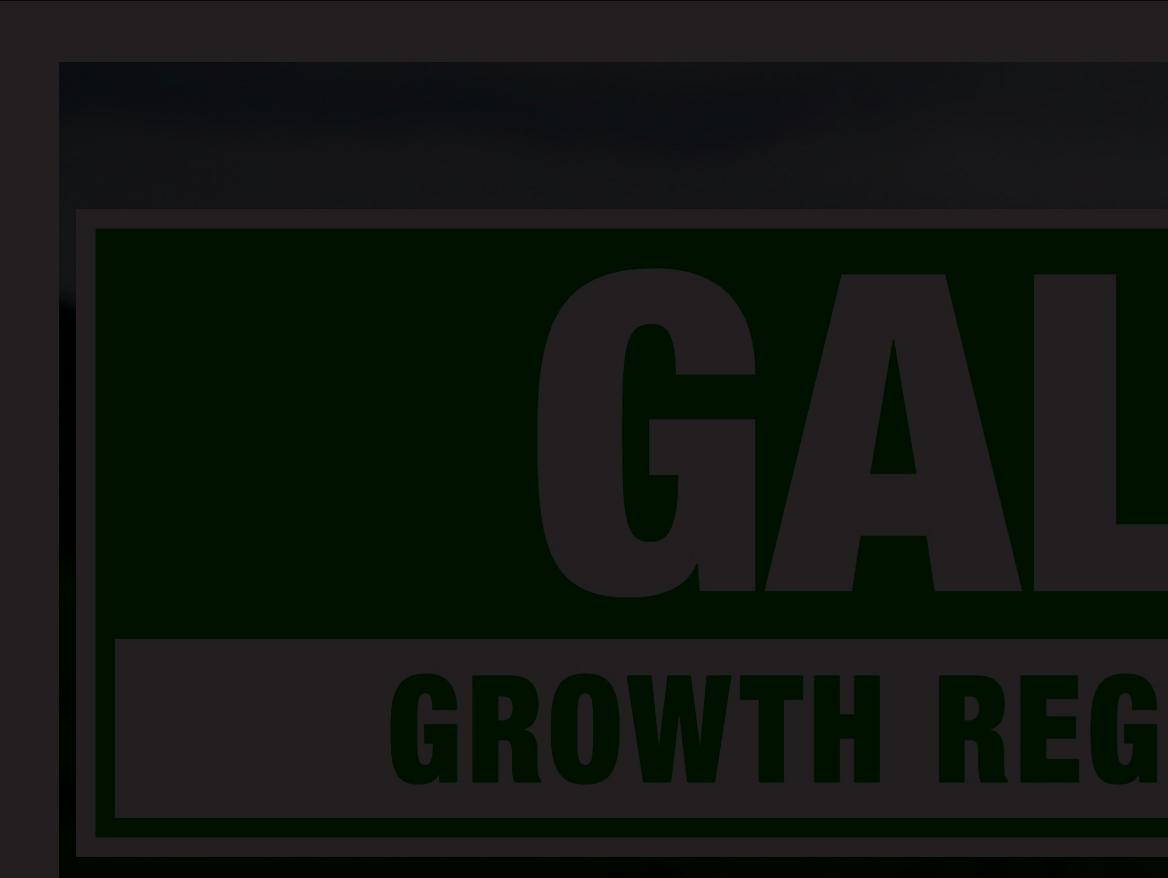




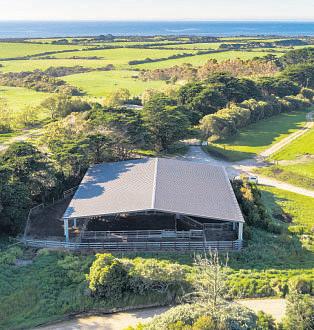
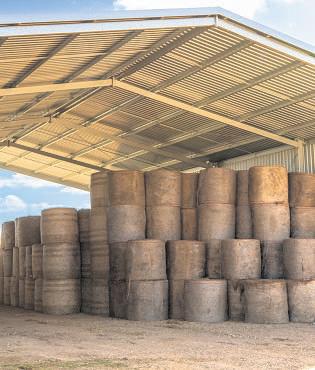

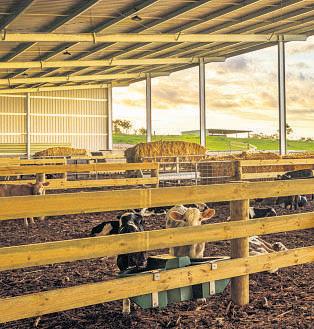
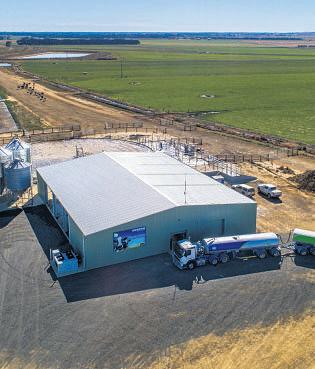





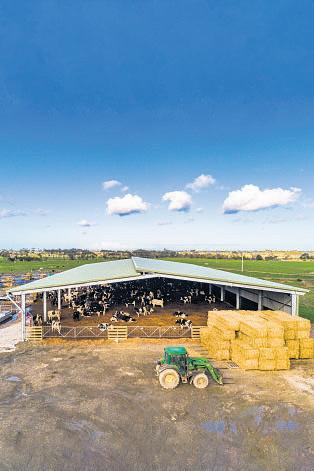















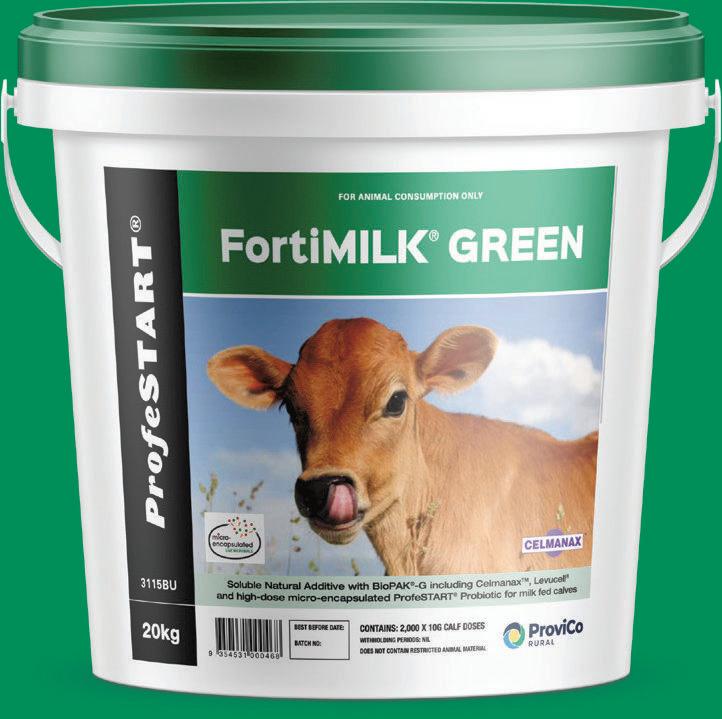


Gippsland Hoof Care’s hydraulic foot trimming chute makes the foot trimming process ergonomic for both the cows and the operator.

Meaning less stress on everyone, less chance of injury to the animal and less chance of the trimmer being kicked.
Dean has over 15 years’ experience foot trimming and treating lame cows. He began his career as afarm apprentice and was then fortunate enough to work under the guidance and expertise of local large animal expert Jakob Malmo.
Dean can trimupto20cows an hour in the chute.

Lame cows take approximately seven minutes to do.
This becomes an important factor when you consider the large herd numbers in some dairy farms.
Whilst the chute allows for bulk numbers of cows to be done in atimely fashion –Dean also prioritises visiting lame cows and does many visits out to just asingle lame cow.
Designed by hoof health expert, Karl Burgi,the leg restraintsystem received
international recognition because the leg positionissafe for the cowand ideal for technicians to performprecise trimming procedures.
It carefully guides each leg into position, following the natural leg strokeand range of motion - eliminating any stress on the cow, securely holding the leg for effortless assessment of the hoof.
The Chuteenables extremely efficient loading of the cowsand the effortless hydraulically synchronised controlsdo all of the work during animal loading.


It then gives the technician an ergonomic work area for trimming the cow’shoof–reducing manual strains, minimising steps and saving time. On average –Deanis able to trim acow every 3minutes using this Chute.

Gippsland Hoof Care provide apersonalised and affordable hooftrimming and lame cow treatment service for the dairy and beef industriesthroughout wider Gippsland Region.

GippsDairy is excited to present its major event for 2023 at the Regent Theatre, 210 Commercial Road, Yarram on Wednesday 7June from 9:30am to 3:00pm, followed by an optional networking dinner at the Yarram Football Club, Railway Avenue Yarram from 6.30pm.
The event will include aline-up of engaging, informative speakers who will provide relevant and practical content on all things related to people and development.
During the event you will hear from our keynote speaker, Oli Le Lierve.
Oli is the Founder of Humans of Agriculture,astorytelling platform that looks to connect, engage and inspire those within andtowards agriculture, to help shape afuture that’s happier, healthier and more prosperous.
This will be followed by apanel discussion, led by Matt Harms of OnFarm Consulting.
This discussion willshowcase farmers being innovative in the employment attraction and retention space.
There are then threebreakout stations of which participants can choose one to attend.

1. Sally Murfet, Inspire Ag –Developing self
2. Kylie Paatsh –Developing others
3. James Freemantle –Adaptive leadership
The Muster will be followed by dinner, where the keynote speaker Sally Murfet, will discuss ‘The human agronomy of farming’.
JoinSally as she discusses four broad
themes of communication, culture, connection and conduct.
Sally will provide further industry context about why building capability and capacity in our peopleissoimportant in the current operating environment and what are some of the external factors that are impacting the sector’s ability to attract, develop and retain talent.
This event promises to deliver in spades. Registrationisessential for catering purposes.
To register visit www.dairyaustralia. com.au/gippsdairymuster or contact GippsDairy on 5624 3900or info@gippsdairy.com.au.

ColleenBye is no stranger to the Livestock industry.
Commencing as an AI Technician with Eastern Genetics early in her career, she quicklymoved to the role as aLivestock Agent with Rodwell’s based in Sale for 10 years, before ‘CB Livestock’ wasestablished in 2010.
During this period, Colleen was successfullyrunning her beef and dairying operationsinparallel,inturnproviding clients with confidence that she has a strongunderstanding of livestock operations and rural markets.
It was only natural that Colleen progressed into real estate and so joined the industryin2015, completingher real estate representative course.
Her focus on rural and lifestyle property has seenher becomeamarketleader in the sector,with exposure to both domestic and international clientele.
In 2021, ‘CB Livestock&Property’ was established, with the addition of the office in Rosedale to further meet the livestock and real estate needs, both residential and rural, in the area.


Located in the oldnewsagency, on the roundabout in Rosedale, Victoria,the beautifully renovated office has plenty of parking and two street frontages,with two dedicated illuminated windows for their real estate advertising.

Over ten thousandvehicles pass through the township daily, in addition to the large volume of foot traffic walking past, making the office acentral, prime location.
With afriendly team environment and a wealth of local knowledge, you are always welcome to drop in for achat and acoffeeto discuss your livestockorrealestate needs.
The CB Livestock &Property team consists of livestock agents, real estate and administration personnel, servicing clients throughout the Gippsland region and beyond.
As an independent livestock and property agency, they areproud members of the RMA Network allowing accessacross numerous Australian markets with fellow RMA Network members and agencies.
“We are passionateaboutconnecting buyers and sellers using the modern markets and tools available,” said Colleen.
Livestock services includeaccess to major selling centres for store and fat cattle; beef and dairy cattle direct to abattoirs weekly from Gippsland; herd and paddock sales; and regularexport heifer shipments for both beef and dairy.
As locals within the farming community, theteam bring avastknowledge of the district, livestock operations, rural markets and astrong understanding of the pressures faced by the region.
CB Livestock &Propertypride themselves on commitment to the industry, clients, and the community they live in.
The Team value their community and as such, provide sponsorship and support to various local clubs and events.
For your next livestock or real estate enquiry, be sure to call in and say hello to the CB Livestock &Property team at 1 Prince Street, Rosedale 3847.
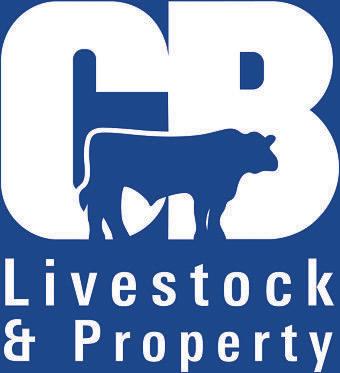
Address: 1Prince Street, Rosedale, Vic. 3847
Email: office@cblivestock.com.au
Website: www.cblivestock.com.au (yet to be launched)
Colleen Bye: 0467 533 003
Phillip Fleming: 0498 242 421
Lauren Masters: 0484 361 177
Wayne McKay: 0419 486 282
Kellie Heyne: 0428 120 686
Steve Fallon: 0427 352 231
Corey Welch: 0499 291 158


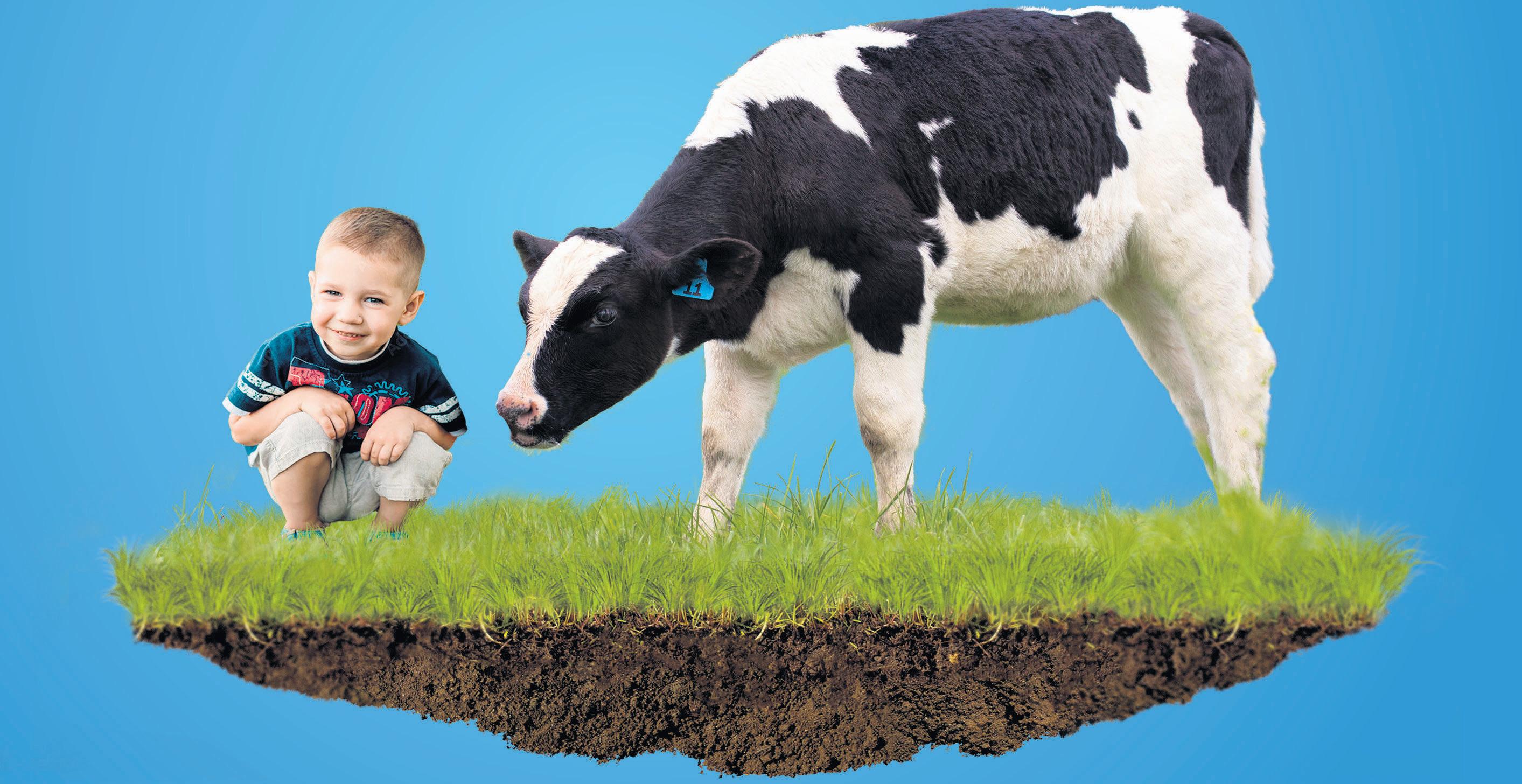

THE life of adairyfarmerisalways interesting.
Youcan never be quite sure of what’s aroundthe corner.
It may be floods or worse…drought. Either way, Australia’s dairy farmers aresoresilient that theyalways seem to bounce backfromthesenatural disasters.
In spite of those challenges,farmgate milkprices areforecast to riseby28 percentto72.6cents perlitrefor the 2022-23year
It’sbeing driven by high globaldairy prices and that in turnhas ledto increased competition between processers.
Other highlightsincludeAussie cheese commandinga premium in Japan, accounting for36percent of all Australian cheese exports!
Other bright spots might be New Zealand’sban on exports of livestock by seatoChina
Last yearthey exported 126,800 live cattletothe People’sRepublic, most of which were dairycows andheifers.
Australia delivered 93,000 live cattleto China over thesameperiod. Forecasters also expectthe UK market to open up andmaybe evenarelaxation of theEU32percent importtariffs on diary importsfromAustralia.
It’snot all good news, it’s notall bad newseither!
The most important thing is dairy farmers arehaving thecouragetoinvest in the rightplant, lookingforward to milk production improving in the second half of 2023 with seasonal conditions across easternAustraliabeing drier
That will leadtoincreasedproductivity by improving the quality and quantity of on farmfeed andfodder!
ONE companythat understands the importance of thedairy industryis Australian Pump Industries.
This innovative Australian operationhas developed aproduct range of pumps and high pressure cleaning equipment destined to makethe lifeofmilk producerseasier
Importantly, they arewellrepresented in the Gippsland region by what they call their‘Gold Distributors’.
One exampleis in Warragul whereFarm
Depotproudly represents the Aussie Brand.
Matt Keeble does aterrificjob in supportingAussie’sprogressive product line, knowing that it represents quality, is Australianmadeand hasveryreal advantagesfor the user BrownWigg branchesatStratford, Officer,Meeniyan andYarramproudly represent the Aussie Pump brand of product.
The team loves thequality,particularly whenitcomes to fire pumps,effluent pumps and similar,theyput Aussie Pumpsatthe top of thelist.
HERE is arundownonhow Aussie Pumps helpsthe dairy industry.
“Weknow that weather patternsare changing!
Youdon’t havetobeblind nottosee the
tempo of change is acceleratingwith less climate stability than we’ve ever seenbefore,” said AussiePumpsChief Engineer, John Hales.
“Ourjob is to protect the farmer by developing products,many of which are basedonfeedback from field days”,he said.
Halesknows the challenges dairyfarmers face including bushorgrassfires.
“Thisisarealityand ourjob is to produce better products, at abetter price, with more value added than competitors! Dairyfarmersand the agricultural industryhave aright to expectthat”, said Hales.
AUSSIE developed arange of firefighting pumpsthathave25percent higher performancethankey competitors like Daveyand Onga.
Thesecretisa huge 7” impeller,one piece,thatis perfectlymatched to Honda petrolorYanmardiesel engine drives!
“Itgoes together perfectly with great results”,saidHales
Dairyfarmers wantinga versatile pump canlooknofurther thanthe Aussie Fire Chieforits bigbrother,the twin impeller “Mr T”
Even thesingle impellerwill give you almost 100 psi, makingitsuitable notjust for firefighting butfor ahost of other ‘on farm’ duties
They include longdistance water
transfer,machinerywashdown,and lots more.
It willeven pumpagricultural chemicals whenfittedwith aVitonseal kit!
When it comestoprocessing, Aussie has got316 stainlesssteel pumps that will handle whey,even caustic ladenwaste water from theprocessing plants. Big self-priming pumps will handle flows up to 2200 lpmwithsomeavailable with high pressureaswell.

These Aussie GMP self-priming pumps alsocomeinstandard cast iron configuration with pricesthatare extremely realistic forfirstworld products
Aussiebuild them with Honda petrol engines, Yanmardiesels and even hydraulic drives for applicationsas diverse as watertransferby tanker or spraying effluentinthe paddock.
They arealsoavailableinnickel aluminium bronze
AUSSIE Pumpstackles theseina simple way.
They build arange of Hondapowered 30 percentglassfilledpolyester pumps that self-prime perfectly, firsttime, every time andare equipped with arange of elastomers, suitable foravariety of liquids
“With thehighcostofurea, phosphates and otherag chemicals, farmers can’t afford to waste adrop,” saidHales
The 2” and 3” polyester ‘SmartPumps’ mean thatsprayers canbeloaded fast and safely
We arereplacing tiredwarnout old fire pumps that have been misappliedfor pumping agricultural chemicalsinthe past.
Thesepump high volume, not high pressure.
The 3” version willeven handle up to 1100 lpm,”hesaid.
THE Aussie Pump team and theGold Distributornetwork allback theprogram to take climate change seriously Not by protestingbut believingthe government shouldtake action,if necessarytochange the landscapeto avoid floods andretain water storage for farming and civicuse.
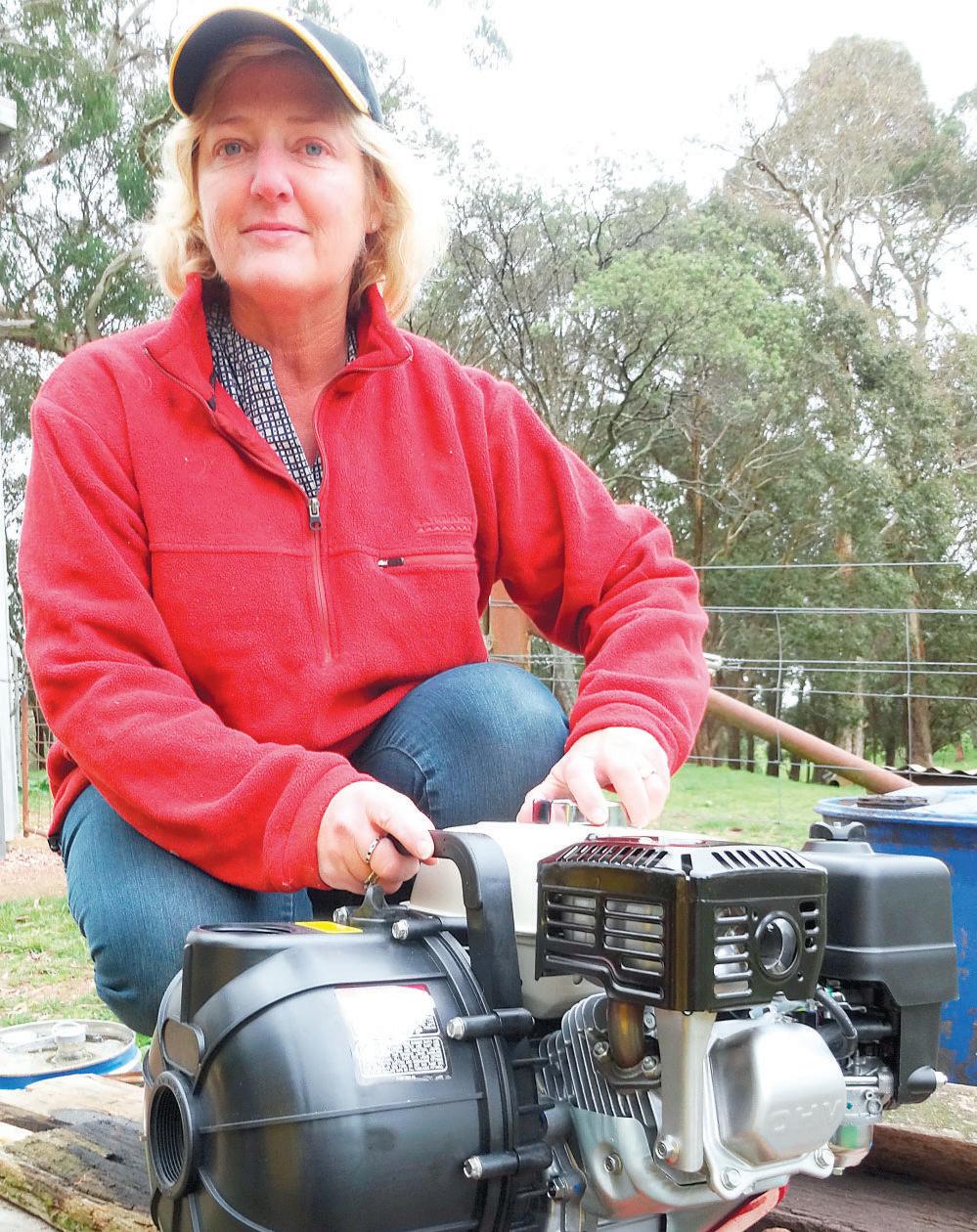
“Australia can be drought proofed. That was provedbyBradfield in the 1930’s.
All we need is agovernment with the courage to actually take on this momentous task!
It was costedduringBarnaby Joyce’s timeinFederalparliamentataround $60B.
Let’sassume it’saround $100B now. Wouldn’t thatbe thebargainofthe century”, said Hales. Further informationisavailablefrom Aussie’s Gold DistributorsinGippsland. Or visit www.aussiepumps.com.au

































































































































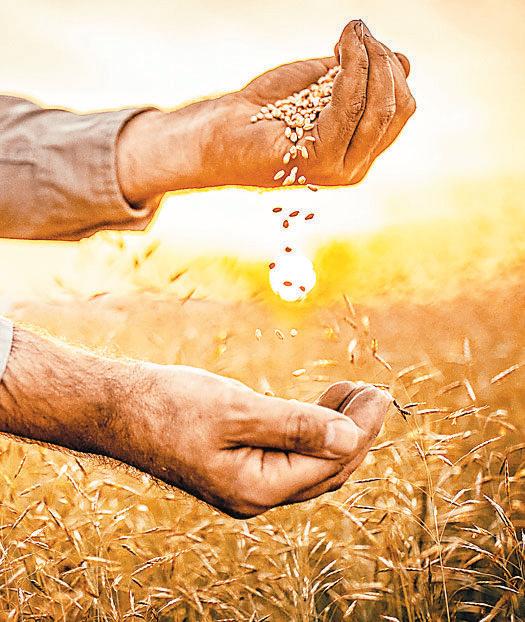


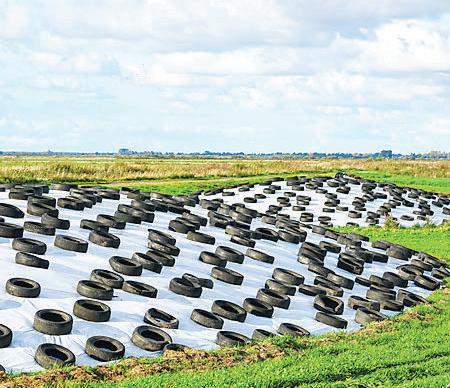

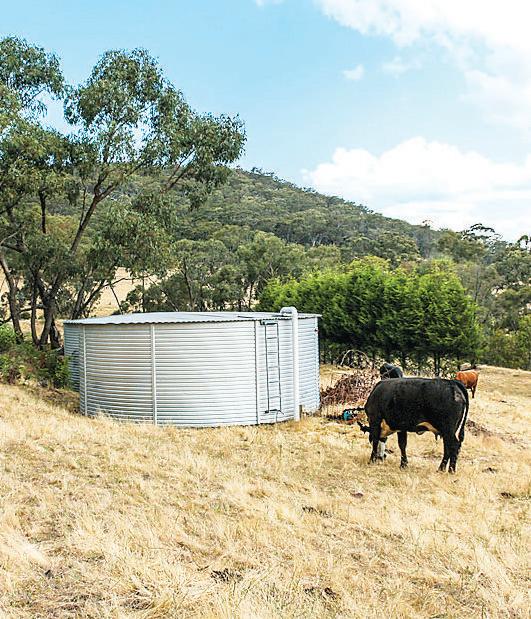














































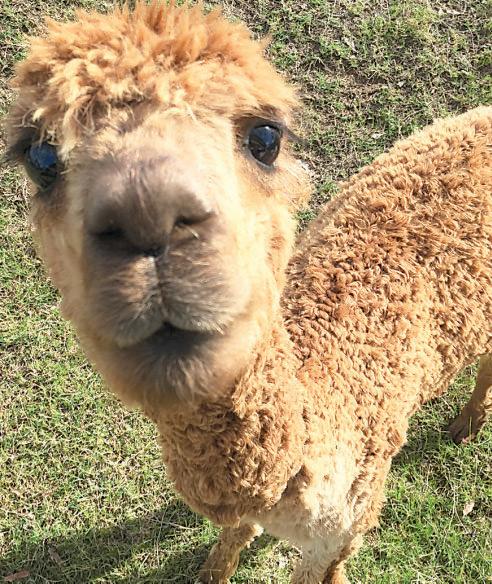
















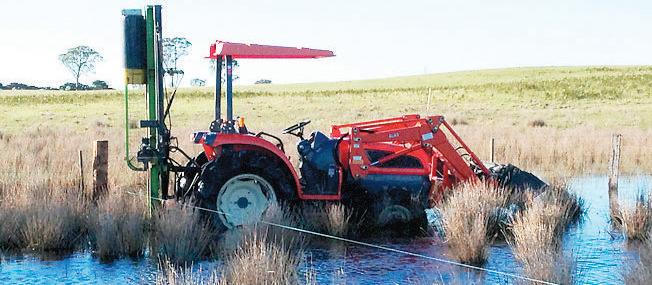













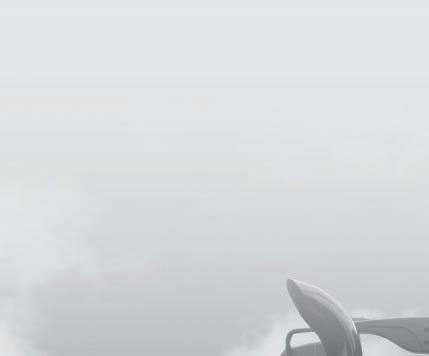

MELBOURNE, VIC March 15 – Kioti’s top-of-the-line HX
Series of high horsepower premium tractors has arrived
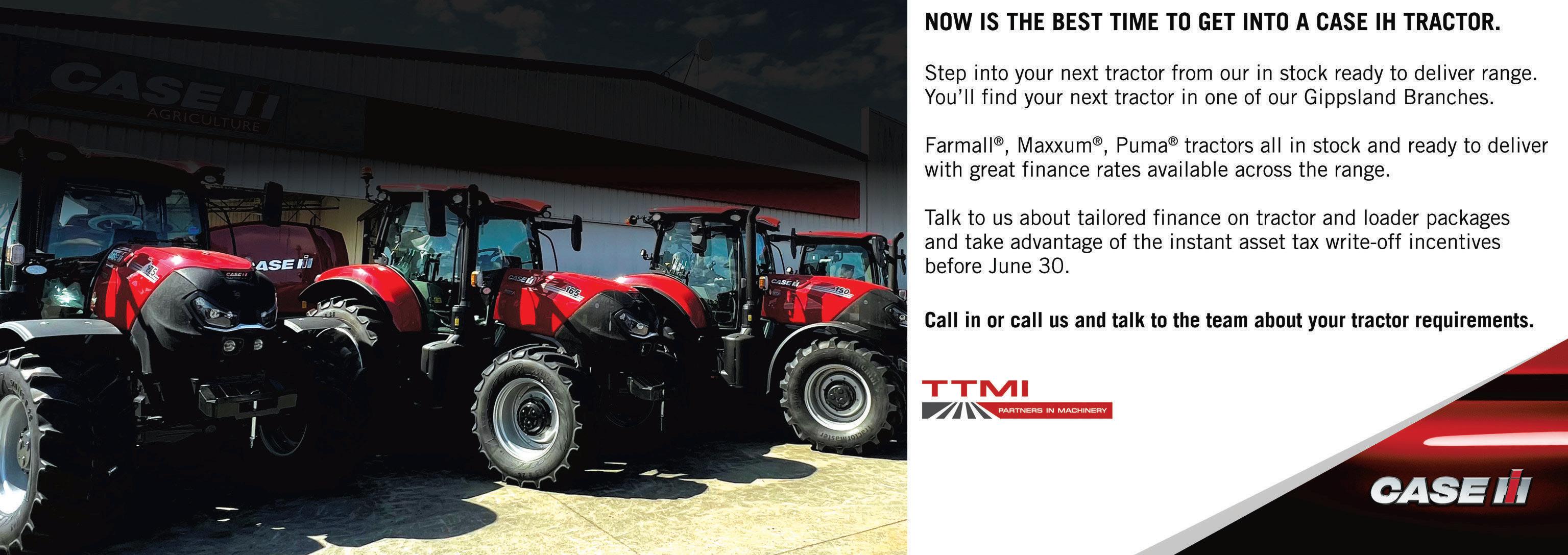

Down Under
This is very much the next chapter for the renowned South Korean manufacturer as it now completes a full service offering from sub-compact to compact utility to heavy footprint tractors Notably all major components are built by Daedong, including engine, transmission, cabin and planetary drive front axle
The HX Series comprises two models, with respective outputs of 130 hp and 140 hp, and features the OEM’s own fuel efficient CRDI 3 8L diesel engine, a luxurious and spacious working environment, 8 speed Powershift, 32 x 32 transmission, 230l fuel tank and a whopping 4852 kg lift capacity
Features include:



Adjustable multifunctional armrest
Work and Drive modes to change the take up point of the clutch

3 speed PTO with PTO cruise control which sets the working rpm
Auto 2WD disengages 4WD when travelling more than 20km/h

Air seat which swivels both ways, head rest, seat warmer and comfort trainer seat
· Limited slip front differential
These tractors represent remarkable versatility, with a sturdy, imposing footprint ideal for rugged paddock work, cultivation, heavy duty lifting, haymaking, road travel and all manner of towing implements
PFG Australia proud distributor of Daedong/Kioti since 2000, recently unveiled the HX to its dealer network ahead of a wider national launch
Michael Cook, dealer co-principal at Engage Ag in
Toowoomba, Queensland, said: “It takes Kioti into the serious farming segment and it’s the next step for Kioti in terms of refinement By that I mean style, finish, cab and weight Plus, we know this will build on their reputation – the R&D and quality is there ”
Stuart Phillips, national sales manager of Kioti Australia, said: “We did anticipate a surge in interest given Kioti’s build up and investment in the HX, but the response is phenomenal The way it looks, its capabilities, toughness and deluxe features have set the bar to new levels ”
Modern design, robust functionality Backed by Kioti’s impeccable record for delivering tractors that not only stand up to Australian conditions but last, year in and year out This is Kiotis most powerful and advanced machine, the culmination of years of planning and engineering excellence


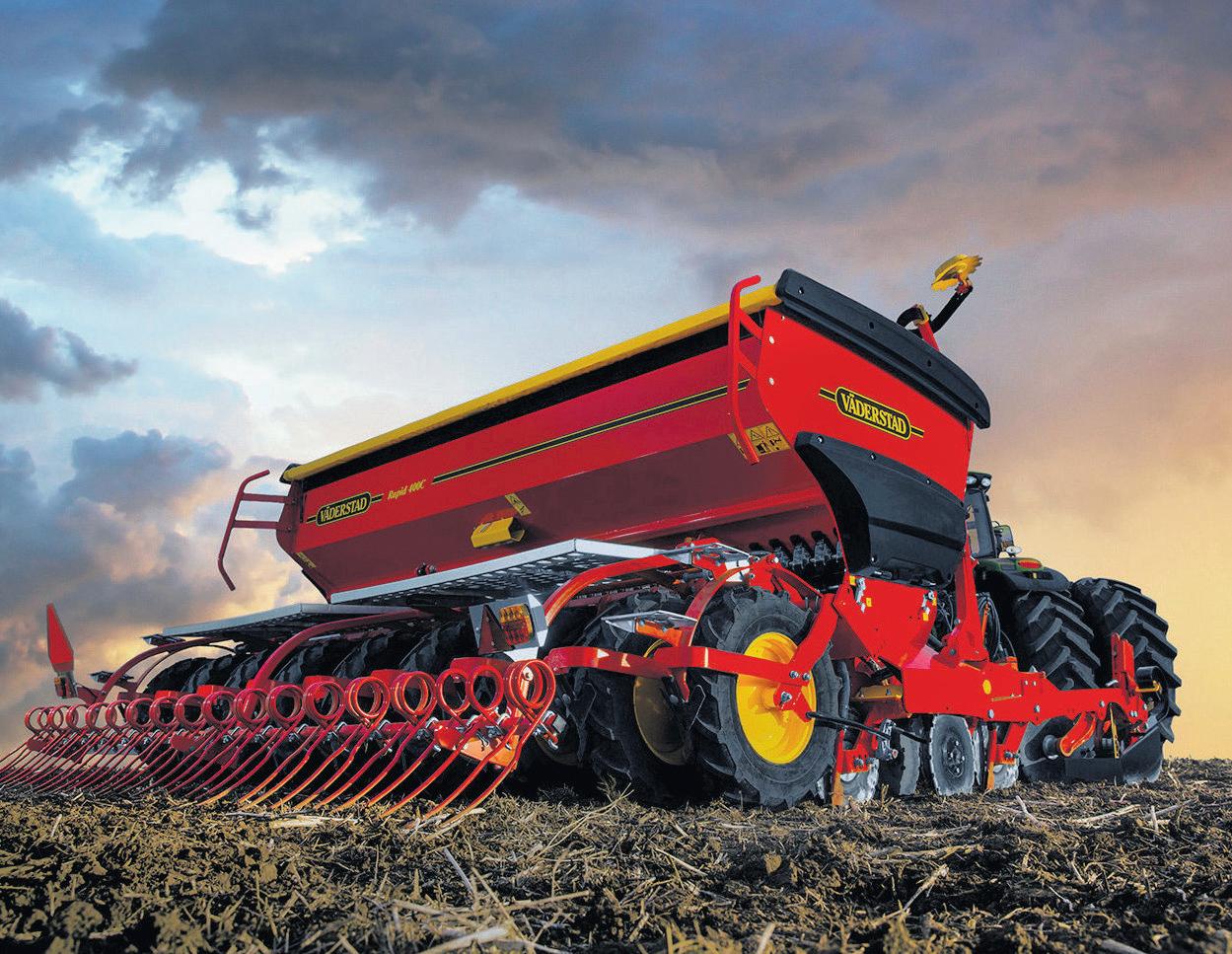





































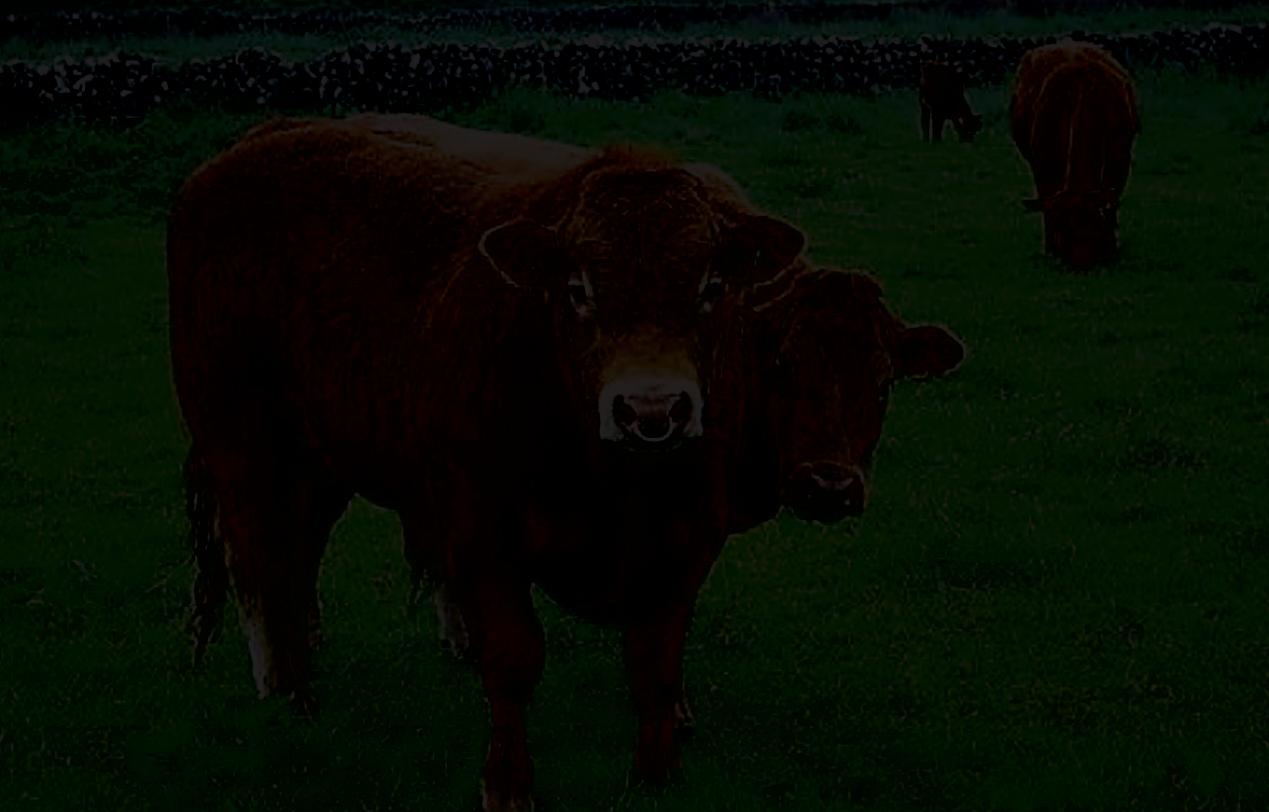 Philip HOPKINS
Philip HOPKINS
FOR Chris Meade,the climate challenge and the need to lower greenhouse gas emissions, place his beloved Limousin beef cattle in the box seat.
Why?
Tests show that Limousin cattle produce up to30per centlessmethane,a key greenhouse gas, comparedwith other breeds, says Chris, who owns the Pelican Rise Limousin cattle stud at Colac and is chair of the Australian Limousin Breeders Society in Australia and New Zealand. It’s all due to genetics, not to any special feed.
“Genetics create the situation wherethey (Limousin cattle) convertfeedin abetter manner.They area leaneranimal; they don’t lay on fat as easily; it’s easier for them to turnfeed into meat and muscle, it takes morefeed tomake fat,” saidChris, who has been breeding Limousin for almost 15 years.
“That’s one of the reasons why Limousin is very effective in terms of methane -fewer greenhousegases.Thatcomes back to the F94Lgene.”
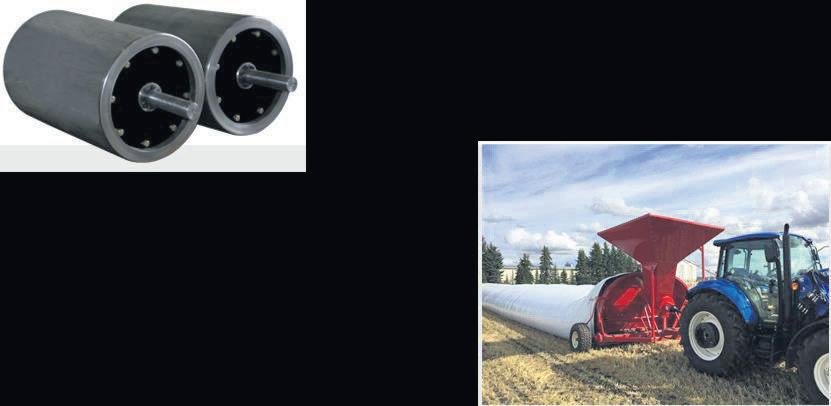
Limousin isaFrench breed of beef cattle from the Limousinand Marche regions of France. It was formerly usedmainlyas adraughtanimal,but in moderntimes became reared for beef. Aherd-book was established in France in 1886.
Limousins have becomepopular because of their low birth weights (ease of calving), higher than average dressing percentage (ratio of carcase to live weight) and yield (ratio of meat to carcase), high feed conversion efficiency, and theirability to produce lean, tender meat.
Chris said in true Aussie and New Zealand style, the French Limousine had been adapted to local conditions. “In France and the UK, Limousin arethe largestand most popular breed. Alot of the time they are housed in barns, ahigh proportion of that for winter,soit’s adifferent style of animal, but it’s common genes that areextremely important. That comes backtothe F94L gene,” he said.
This gene was discoveredbyanAustralian scientist, DrWayne Pitchfordand his team, 20 years ago at Adelaide University. Dr Pitchfordwill speak at the Limousin society’s annual generalmeeting on May 21 at McClaren Vale in South Australia.
“This will involve interactive discussions with members. Not enough work has been done on the implicationsand positive meaning of the F94L gene,” said Chris.
“Wewant to give our members more knowledgeof whatthe gene is, what it means, its strengths.”
The Limousinbreed is celebrating its 50th yearin Australia, but it is only in recent times that the importance of the gene and
methane has been realised.“The French werenot awareofthis apparently,” he said.
As chairofthe Limousin breeders society, Chris aims to maximise the attributes that the Limousin has. “An underrated attribute is that cross-bred, the offspring gets the attributes even if the other breed does not have the F94L gene. The offspring has one copy of the gene. The bulk of Limousin have twocopies of theFR4L gene;one is passed on,” he said Angus,however,remainsthe strongest beef breed in Australia due to its consistency.
“Processorsand supermarkets can buy Angus and be sure it gives them the same meat quality for the supermarket shelf,” said Chris.
“However,restaurantslovebuying beef that is 50per cent Limousin, or Limousin-infused.
The grain of the Limousin is very fine and soft. If you have raw Limousin beef next to another breed, you can pick the fineness and softness of that meat; it’s quite clear
“Cross the two -you get the benefit of the marbling and fat contentofthe other breed
British breeds lay on fat much easier; it’s an element of the flavour.You getflavour from fat.
Angus has high marbling, rich flavour.”
In contrast, ChrissaidLimousin was a softer meat, with lower fat content and lean.
“But it stillhas plentyofflavour; the Europeans love it, whereas Australians moretowardsthe fat content of British breeds.”
(As an aside, Chris mentioned that in the US, Limousin is crossbred with Jerseys.
“Jersey produce oneofthe best steaks going.Jerseysteaks areone of the most tender and tastier streaks, just smaller. Limousin crossed withJerseyisa big market over there.”)
Back to Limousin in Australia: Chris said akey was its feed efficiency and the carcase.


“They win many carcasecompetitions due to the high recovery. Kill anormalbeef animal, you 50- 55 per cent recovery -yield -fromthe body. If you take Limousin, you get 55-65 per cent. It’s the lower bone content, the higher meat and lower fat content -that’san efficiency in itself, that’s part of the methane quality,” he said.
Thereare new feeds on the market, such as seaweed,that apparently lower methane emissions.
“The science is saying it looks good, but we don’t know. It needs to happen for a few years, but why do that when you can get it naturally?” he said.
“With Limousin eating grass in its own paddock, you aregetting that.”
Ahardy animal, they will stand up to tough weather conditions, such as in France and Britain.
“Theyare not sooks.Theycalvein southernNZwhen thereissnow acouple of days after calving. They produce fantastic mothers and the calves grow really well,” said Chris.
In Australia and NZ, thereare about 400 registeredstud breeders, and more propertiesbuy them as normal cattle. Chris himself has about 50-60 breeders and commercially another150-200 breeders and commercial crossbreeds. They arepopular at beef sales.


“Many buyers arelooking for beef for the restaurant trade; someabattoirs in Victoria and NSWtarget those. If buyingbeef for the supermarket, they want consistency, hence the high percentage of Angus cattle in Australia. Thereare not enough Limousin to do that in the marketplace; Angus remains the dominant breed in the sub-tropical part of the (Australian) world,” he said.
WhenLimousinfirst came to Australia, they had atemperament issue.
“In France and the UK, they werelocked up alot, had alot of human interaction and so werequieter,” said Chris, but initially in Australia they werefairly wild animals.
“That’s changed dramatically; now Limousin wouldbeone of the quietest breeds in Australia.” The bulls? “They are annoyingly quiet. In fact, Itrust the bulls morethan the cows, who aregreat mothers. They arevery protective of their calves; that’s part of their history and part of their strength as well,” Chris said.
Philip HOPKINS
BEEF farmers across all breeds reported positive results at the recent bullsales.
Gra eme Co ok, p rin cip al at RanganCharolais,whichisabout30 kilometres east of Wodonga, had 46 polled Charolais bulls up for sale on March 17.
Atotal of 38 sold, with the best result $22,000, and an average sale of $9947.


"It was afantastic result. I've been doing this -breeding RanganCharolais -for nearly 20 years, and this was my 14th annual sales," Graeme told Gippsland Farmer
The reasons for their popularity, he said, includedthe extra weightand yieldthe cattlegive,the earlymaturing,the ease of calvingease, and the factthey were naturally thick and polled.
With morethan 250 registered females, Graeme said the bulls weresuited to southerngrass finishing systems.

"Weknow the genetics and traits we wish to develop in our own herd, and if you're doing your job right as a stud owner, you should be able to take advantage of your own genetics, "he said.
The sales topped agood yearfor RanganCharolais, which at the Melbourne Show, brought home Senior and Junior Charolais bulls. Bothbulls also went on to be crowned reserved interbreed Junior and Senior bulls.
Phillip Commins from Nunniong Hereford Stud at Ensaysaidhehad abetterclearance rate than normal and abetter clearance rate than in the past.
"Wesold 26 bulls out of 38, but the prices werenot as good," he said.
The top sale was $11,000; four bulls each wentfor that amount.The averagesale price was $7800.
""Thereweremanyrepeat buyers and some new ones," he said.
David Brewer,owner at Brewer Beef, betweenTallangattaand Corryong,sold all barone of his45bulls. This number covered avariety of bull breeds -18Angus, 14 Black Simmental, 14 SimAngus and four traditional Simmental.
Thetop price was $13,000, with an average of $6677,but this was $800 lowerthan the previous year

David said this year,Simmentalbulls




















outsold Angus, with Simmentals averaging $7152, up $900 on the previous year
"This year,Angus did not sell as well as last year.They weretop of the breed, but thereisnoexplanation why they did not sell as well," he said.
The superior quality of Angus meant more than 20 Angus weresold last year
"Wehad 15 new clients. This was excellent -15out of 45 is pretty amazing," he said.

Alpine Angus, located on the Great Alpine Rd at Porepunkah, sold all their bulls -98 out of 98 at auction -with atop priceof $32,000 and an average of $11,300.
"Wegenerally have afull clearance," said the manager,Chris Oswin.
"We'rewerepretty lucky -all sold at auction, with some (initially) passed in.""
Chris saidmostweresoldlocally -"the valleys around here, north-east south of Albury and west of Wangaratta".

The top price was paid by aTasmanian buyer,but therewereacouple from Queensland and afew from South Australia and NSW
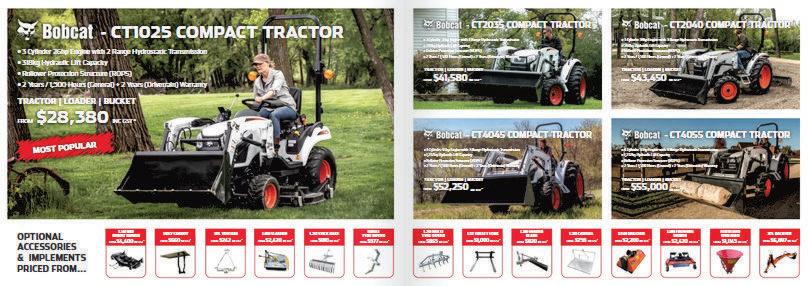


Chris,who has been runningsales at Alpine Angus for 12 years, said he believed
this was the stud's 20th sale.
Last year,AlpineAngus also had a100 per cent clearancerate, with 109 bulls sold with arecord-breaking price of $90,000 and an average price of $16,037.

BarryNewcomen from Newcomen Herefords at Ensay, described his sale as "pretty good, but down on last year".
He offered 64 bulls, with 45 sold at auction at an average price of $8288. Six bulls weresold later,whichdroppedthe average.
Of the then total of 51 bulls sold, the top of $17,000 went to astud in NSW,while the average price was $8100.
Last year,Barry sold 54 bulls at an average of $10,100; the year ear beforethat, 52 weresold "for not as much",
However,Barry said this year'sresult -51 sold for an average of about $8100 -was the "second best sale we have had". "That's alot of bulls for us tosell inEnsay. We offered 64, which is alot. We did all right, we werequite pleased," he said.
"Weknew the market was going to be down. It's drier; things areagainst the breeder at the moment."
TomHAYES
LOCAL cricketing export Nicole Faltum will tour the United Kingdom with the Australian squad later this year,after being selectedinthe Australia A13-player squad.
At the age of 23, Faltum has now been partofprofessionalcricket since 2017, when she began her career with Victoria and the MelbourneRenegades,before moving to the Stars.
Faltum made her debut for Australia Ain January 2022, when she played alongside the Ashes series against England A.
In that series, Australia retainedthe Ashes,somethingthatthe women's side have been able to do since 2015.
Since then, she has done well domestically, captaining the Women's Big Bash LeaguesideMelbourne Stars andstate side, Victoria.
Faltumscored her maiden ListAcentury earlier this year for Victoria, while captaining the state side in the Women's National Cricket League.
She and fellow Australian representative
Ellyse Perry smoked New South Wales in amatch, Faltum managing 107 not out, and Perry 147.
In the newly-formed Australia Asquad,
Faltumisone ofthree wicket keepers, whichleaves the chance that she could be played in the outfield if someone else is preferred.
The wicket-keeping trio of Maddy Darke, Tahlia Wilson and Faltum will surely leave the selectors witha headache ahead of the tour
If anyone in the women's Ashes squad goes down with an injuryorloses form, thereisevery chance that an Australia A player could then get the call up to play.
The women's side will be in England during the men's Ashes series, which begins on June 16 and is scheduled to finish on August 1.
The women's Ashes tour consists of one Test match ,three Twenty20's, and three One Day International's from June 22 to July 18.
Anyone not selected from the Ashes squad can drop in and play for the Australia A squad.
The Australia Asquad will face England Ainthree T20's and three ODI's from June 21 to July 2.
Liam DURKIN
MAX Mertonwon’t everhave topay for another beer at Glengarry Cricket Club.
Let’s set the scene.
March 18, Traralgon District Cricket Association AGrade Grand Final.
Glengarry versus Ex Students.
Venue: Catterick Crescent.
Glengarry needs nine to win offthe last over with two wickets in hand.
Number 10 Merton on strike.
First ball: big swipe acrossthe line by the left hander -single.
Brandon Mayberry on strike.
Second ball: sliced drive into the off side -single.
Merton back on strike.
Equation: Seven offfour.
Bowlerchanges back to right armaround the wicket.
Afew overs before, these words came from Gormandale cricketerAdamBrady, who was commentating the match.
“Max has got to pump abig six over midwicket. He’s got it in him”.
It wasn’t over mid-wicket, but he certainly had it in him. And he proved it.
Thirdball: Merton sees it pitched up, puts absolutely everything into it, the ball sails towardlongon, and. (cue Mark Nicholas commentary from Ben Stokes’ 2019 Ashes innings).
There’s aman back, there’s aman back It’s six! It’s six! Max Mertonhas hititfor six!
From that point on, he didn’t need to do anything more.

The match was tied, meaning Glengarry couldn’t relinquish the premiership because they werethe higher ranked team on the ladder at the end of the home-and-away season.
Another run was added offthe fourth ball (an extra) to make the result official.
Glengarry had won. Merton had secured
Morwell
PeterSiddle announced he is set to playfor Victoria again in the 2023/24 Shield season. Photograph


TomHAYES
MORWELLexportPeterSiddle
announced his departure from Shield side, Tasmanian Tigers last month, as he looks ahead to the 2023/24 season back at Victoria.

In apostonInstagram, Siddle wrote, "as theseason comes to an end so so does my time with (Tasmanian Tigers)".
"I've had awonderful time over the past three years and can't thank them enough for the opportunity and support.
"It came at atough time in my life but you all welcomed me and made me feel happy, so thank you for that.
"My time down therewill always hold asport in my heart.
He ended the statement with the partinghint, "Now it's time to run it back with (Victorian Cricket Team). Can't wait to come back home".
Siddle joined the Tasmanian side in 2020, collecting 78 wickets across 30 Sheffield Shield and Marsh One Day Cup games.
Now, Siddlewill re-join theVictorian state side, wherehebegan his career playing 63 Shield matches.
Although it is believed that Siddle is yet to put pen to paper,itisalso believed that he will lead ayoung Victorianbowlingattack,after the departureofJames Pattinsonand in the absence of Scott Boland, who is now partof the AustralianTest squad.
In the meantime, Siddle will play overseas in England for County side Somerset from Aprilto July, beforereturning for domestic duty in Australia for Victoria.
the flag and herostatus at the Magpies. Disbelieving teammates and supporters rushed onto the field to congratulate, or moreaccurately, thank, Merton for his efforts. Man of the Match Al Jenkin even went as far to say “I love you” during the post-match presentation.
Merton himself was in just as much disbelief -number 10s aren’t exactly known for their six-hitting.
“I reckon that would be the second one apart from Under 16s (I’ve ever hit), unknown territory,” hetoldGippsland Farmer
What was going through his head?
“If it’sfulland inthe slot I’llgofor it straight,justkeepmyheaddown,”he explained.
“Usually at training when Itry and go for a big one my head goes up and Iget bowled.
“Weknew we onlyneededeight in the last over,so if we could sneak aboundary (we’d be achance).
“I just saw the ball and hit it.”

Didhethink he connected well enough to clear the man stationed down thereat long on?
“No way, Ididn’t feel Igot it offthe bat and Iknewthe breezewas cominginto me,” he recalled.
“My heart sank because Ithought Iput it straight down his throat, but then Isaw him take afew stepsback and it went over. ”
Walkingtothe wicketwith Glengarry
seemingly dead-and-buried, Merton said he and partnerBrandon Mayberry decided to go down swinging.
“Weknew it was uphill, Iwasn’t nervous becauseweneeded 25 offthe last four overs, it was actually better because Brandon and Ijust decided to back ourselves and hit it,” he said.
“Wethought it was probably over so we might as well have some fun.”
Fair to saythe Glen boyswould have had some fun in the days that followed.
IT is quite the journey from Traralgon to Eugene, Oregon in the United States, where the University ofOregon resides, almost 13,000 kilometres away to be exact.
But in trueAustralian fashion, Josh Charlton was able to make it his home, as apart of the Oregon University Tennis Program.
Charlton, in 2023, is competingasa senior, so with three years under his belt he is one of the more experienced players at the school.
He madeheadlineslast month,when it was discoveredthat he had broken the Oregon University Tennis Program's combinedwinsrecord,settinganew benchmark of 184 combined wins.
Charlton was able to set the new benchmarkin adoubles match,alongside teammate Quinn Vandecasteele, defeating aUniversity of Utah pair,6-4.
Speaking on the Duck Insideron the Oregon SportsNetwork with JoeyMac, Charlton was able to reflect on his college career
When climbing the ranks of tennis, it can be quite individualised, and Charlton spoke on how much changed when coming to college and having to compete as ateam.
"It's completely individual, toactually
cometocollege and to be in ateam is quite special, but it definitely takes some adjusting mentality wise," he said.
"Putting the team beforeyourself is super important."
"It's been acrazy journey, when they did the update to 184 Iwas like 'wow, it's alot'."
"It's been agood run, along journey, so Iwas very happy to get there."
Charltontook the timeto acknowledge that he was able to reach the recorddue to the help of his teammates, as the record includes both singles and doubles victories.

"Morethan half of those wins, I've been with someone," he said.
"It hasn'tbeenasoloeffort,it'sbeena huge team effort.
"LuckilyenoughI've had gooddoubles partners,good teammates, and alot of credit goes to the boys I'm playing with, so alot of respect to them."
Charlton hasalways backedhimself throughout histennis career,and he describes how he progressed from growing up in Traralgon to whereheistoday.
"Growing up in Traralgon, Australia, small town, not many athletescome out of there," he said.
"Coming to the University of Oregon was amassive deal, I'm on the big stage. But I did always back myself."
His competitiveness hascontinued to rise from ayoung age, and he has used it to get to whereheistoday.
"When Iwas youngerasafreshman, Iwas tough to be around, like very competitive, didn't like anything going against me and I didn't really deal with it that well," he said.
"I grew up in avery competitive household, dad was a tennis pro - he has always been my head tenniscoach growing up, my sister is agreat netballer …and she was always doing great things."
Growing up, Charltonbuilt avery special connection with his parents.
"Therewas always tough times and a few clashes and stuff like that naturally, but I've got alot of respect for him (dad)," Charlton said.
"Huge amounts of credit go to my parents. I've got agood contrast as well, with dad being so involved in tennis, and my mum never playing sports."
Charltonsayshe looks forward to the challenge that awaits when he leaves college and continues to pursue tennis.
"It's alot of travel, I'm going to different continents every month so it's definitely a grind but Ilook forwardtothe challenge," he said.
Days after breaking the combined wins record, Charlton became the first player
Zaida GLIBANOVIC
MORWELLEast'sveryown AGrader netballers SiennaBlairand her cousin GeorgiaZammit will flyovertoMalta to try out for the Maltese national netball team this month.
Both youngwomen have close links to thecountry, with Zammit'sfather being Maltese and Blair's grandparents emigrating to Morwell in the 1960's.
Blair is excitedto represent her family heritage.
"Mum will always saylike'keepgoing with your netball, you might play for Malta, you might play for Malta' …all the time, and then hereitis actuallyhappening," she said.
For Zammit,she saidher family was equally elated and proud.
The pair will fly out Saturday, April 8to starttraining with the Malta side on the following Monday.
The pair will have the opportunityto attend atraining camp in Rabat, in preparation for the tournament. The team will train three days aweek, withan increased
training regime scheduled headingcloser towardthe European championships.
When asked about AGrade netballfor Morwell East, the pair said: "Wemay miss three or four games if we'reselected for the international team."
"Wewill be living over in Malta, we will be staying in probably, Sliema and catching abus to and from training."
When askedifthe cousinswould have gone out on their own without each other for support,Blair stated: "for me at least being freshlyanadult and havingtogooverseas, yeah no. It's good to have Georgia".
Zammit loves how sports can be the best equaliser
"Multiculturalism I think it's something that should be celebrated in terms of being able to provide access to an elite supporting community. I'm really excited to meet new people," she said.
"I think sport is something that brings people together,Ipersonally haven't experienced anyracialslurs or commentary with regards to race in the sport, but hopefully, connecting, talking about netball speaking

about netball, Ithink hopefully we can put an end to that sort of negativity.
"But, I'd love to be able to open doors for others, who may have experienced that personally as well."
When asked what she would tell her younger self, Blair said, "I would say keep progressing and keep trying hardbecause you'll never know whereyou could end up."
The European Championships begin on May, 10.
France,Gibraltar,Isle of Man, Israel, Ireland, Switzerland, UnitedArab Emirates, and Wales will all be competing alongside Malta which ranks 33rdinthe world.
Traralgon's Judi Buhagiar is well known in the Latrobe Valley netball community, being the Easternregion manager of Netball Victoria.
Buhagiar has been Malta's netball mentor for the last three years, forwarding the thought of bringing the young women over to play for Malta.
"When Ifirst started doing it was alightheartedconversation, you know we can get some players from Australia to go over

WITHthree years to go until the 2026 Commonwealth Games in regional Victoria, the state government has launchedajobspipelinethataimsto deliver for local workers and businesses.
The Minister for Commonwealth Games Delivery, JacintaAllan,visiting the Victoria 2026 netball venue in Bendigo, recently unveiled agoodsand services procurement pipeline, which features morethan 1200 opportunities for local companies to win contracts.
"We'redeliveringthe first-ever regional Games, creatingthousands of opportunities for local workers and businesses and cementing Victoria's status as the major events capital of Australia," Allen said. The pipeline is worth hundreds of millions of dollars, covering everything from sporting equipment to medals, transport, security, catering, temporary infrastructure, marketing, telecommunications, IT and more.
"The 2026 Games areabout so much
more than sport -asweshowcase the best of rural and regional Victoria, we will also be creating jobs, driving economic growthand deliveringrecordhousing and community infrastructure," Minister for CommonwealthGames Legacy, Harriet Shing said.
Victoria 2026 will be the biggest event ever held in regionalVictoria,with a roster of 20 sports and nine para sports, alongside major festival programs celebrating sport, art and cultureinthe five Games cities -Latrobe Valley, Geelong, Ballarat, Bendigo and Shepparton.
With morethan one million tickets to go on sale, modelling carried out for the Commonwealth Games organising committee estimates the Games will attract about 300,000 visitorsfromoutsidethe host cities, including morethan 25,000 in Gippsland, 100,000visitorseach in Geelong and Ballarat and 50,000 in Bendigo.
The influx of visitors will provide aboost
to local hotels, restaurants, cafes and retailers that, together with jobs pipelines, are expected to contribute more than $3billion to Victoria's economy, creating morethan7500jobsbefore, during and after the Games.
In addition to the goodsand services pipeline, the state government is investing in aconstruction works pipeline for fourGames villagesand competition venues across the state.
The LocalJobsFirstPolicy and the social procurement framework will create opportunities for local contractors and suppliers to win contracts and ensure the Games deliver strong social outcomes. Regionalengagement forums have begun and will continue in host cities.
To view the Victoria 2026 Goods and Services Pipeline, businesses can visit the hub at victoria2026.com.au/business To register asupplier profile andlearn moreabout state procurement, visit tenders.vic.gov.au
in the program to win 100 doubles games, another incredible feat.
With quite ahefty amount of games to play this season beforehe graduates, Charlton is likely to extend his recordtohigher heights beforehis college career comes to an end.
there," she explained.
For Buhagiar,she had to look no further than Morwell, as she "always had Georgia and Sienna in mind."
"I'm Maltese obviously and Ihave acrazy passion for my parents and my heritage, in fact Ihave six netball teams that Icoach at TraralgonNetballAssociation andit's called the Melita Netball Club, Melita being another name for Malta."
Buhagiar noted that the trip will be quite costly for the trio.
"Mario Sammut,the president of the Latrobe Valley Maltese Community Centre, has been an enormous push and massive driver for fundraising," she said.
"He put us onto an organisation called the Maltese Community Council of Victoria and they have aprogram called the Maltese Cultural Scholarship and they have donated to us $2000 each towardour airfares."
The Maltese Community CentreLatrobe Valleyhas also generously contributed a $1000 donation towardthe women's trip.
The two young women will train like professionals in Malta.

THESUPER-VERSATILEMF4700, MF 5700 &MF6700
MF Global Series tractors are purpose built in the latest state-of-the-art facilities, combining the very best of today’s technologies with comfort, simplicity, reliability and quality.
ENJOYUPTO5,200 KG 3-POINT LIFT CAPACITY

Benefit from reliable AGCO Power engines and high capacity hydraulics, with up to 98 l/min flow








Speak to your local Massey Ferguson dealer for more information.
